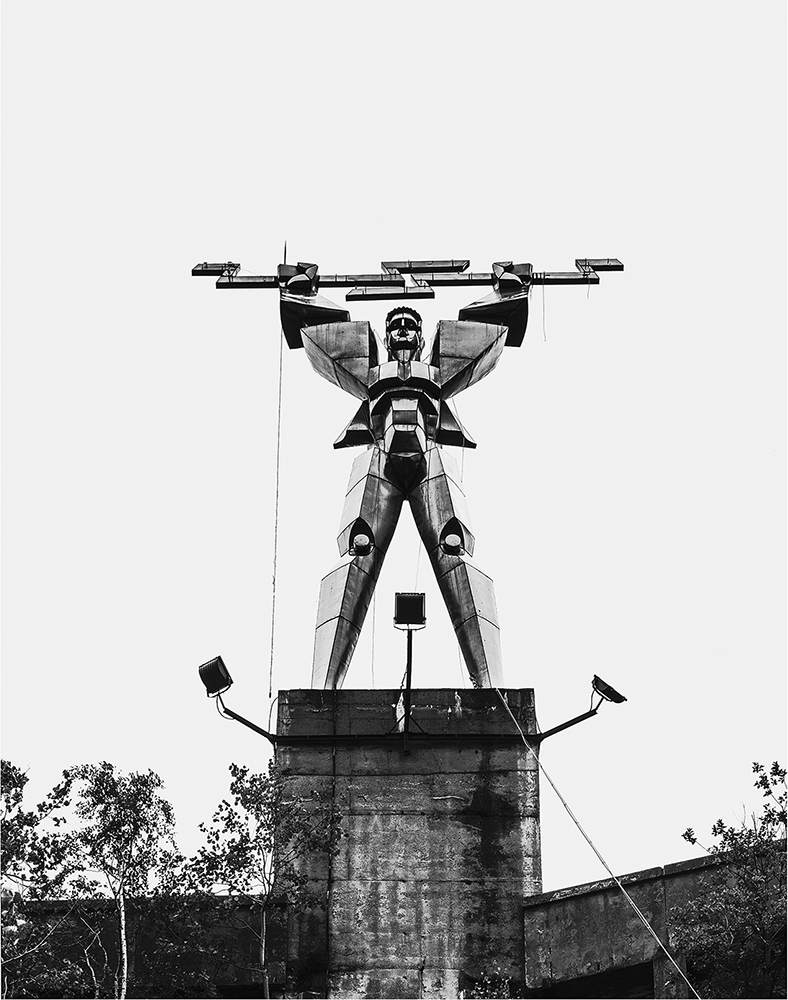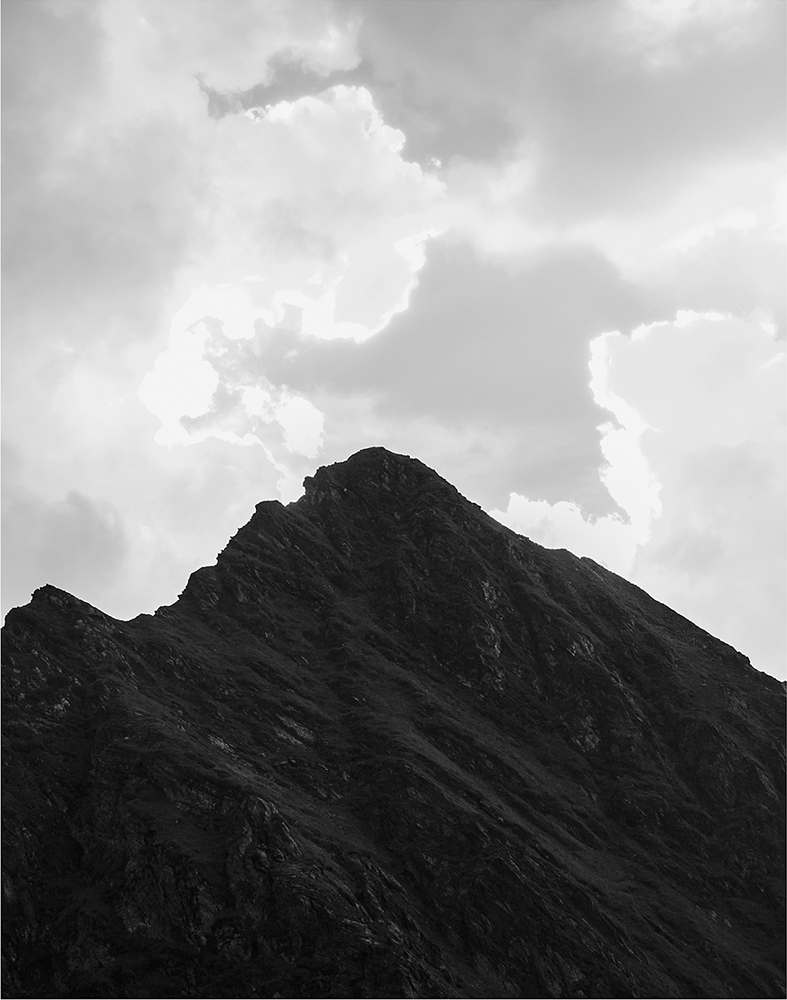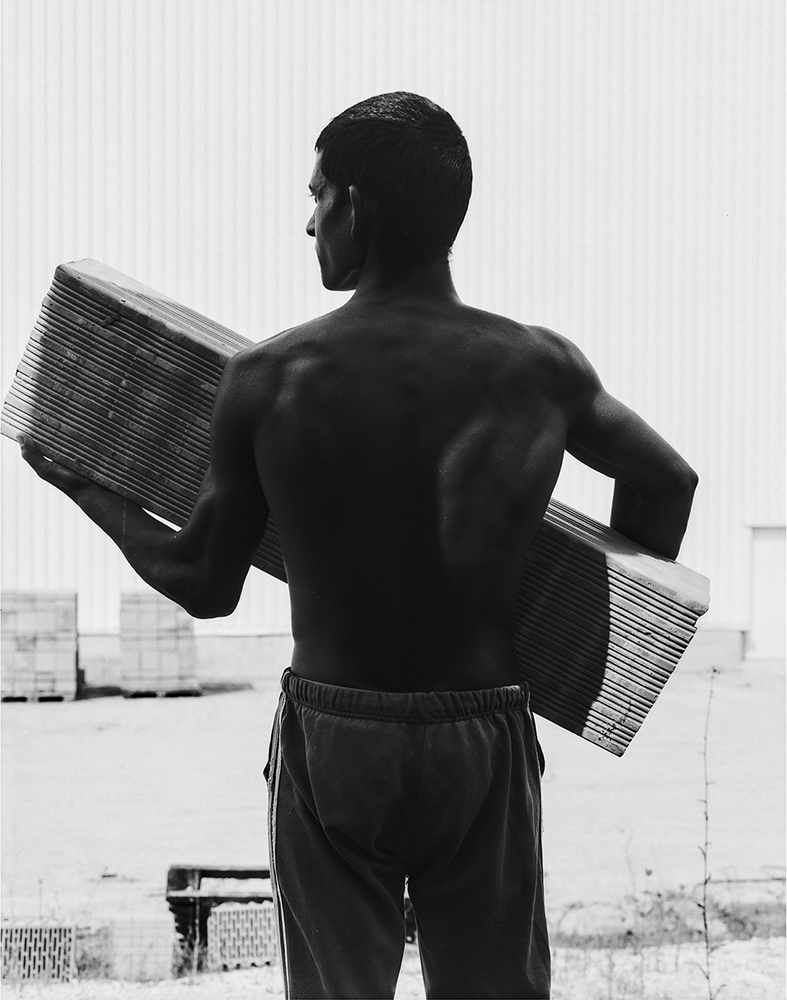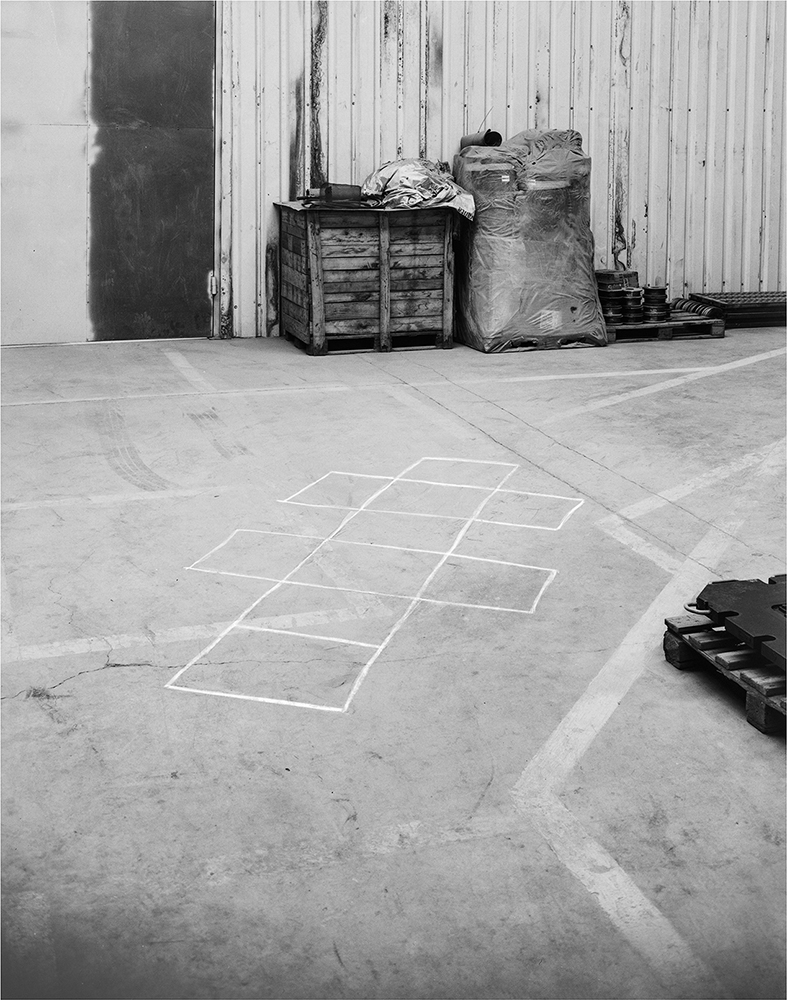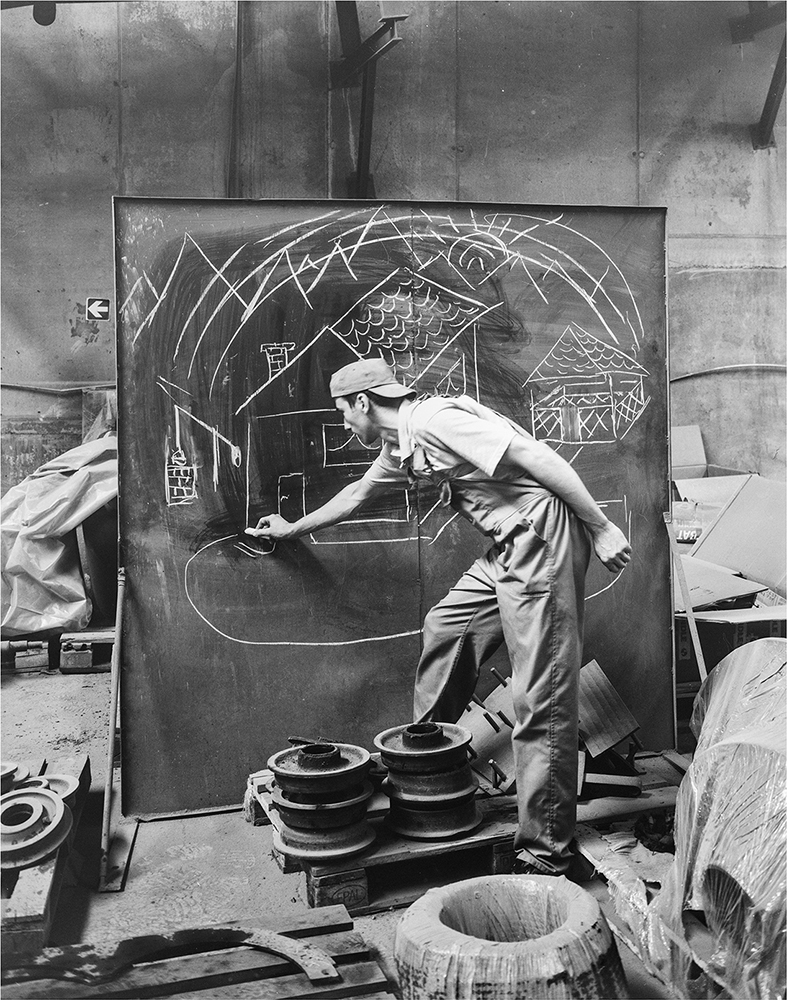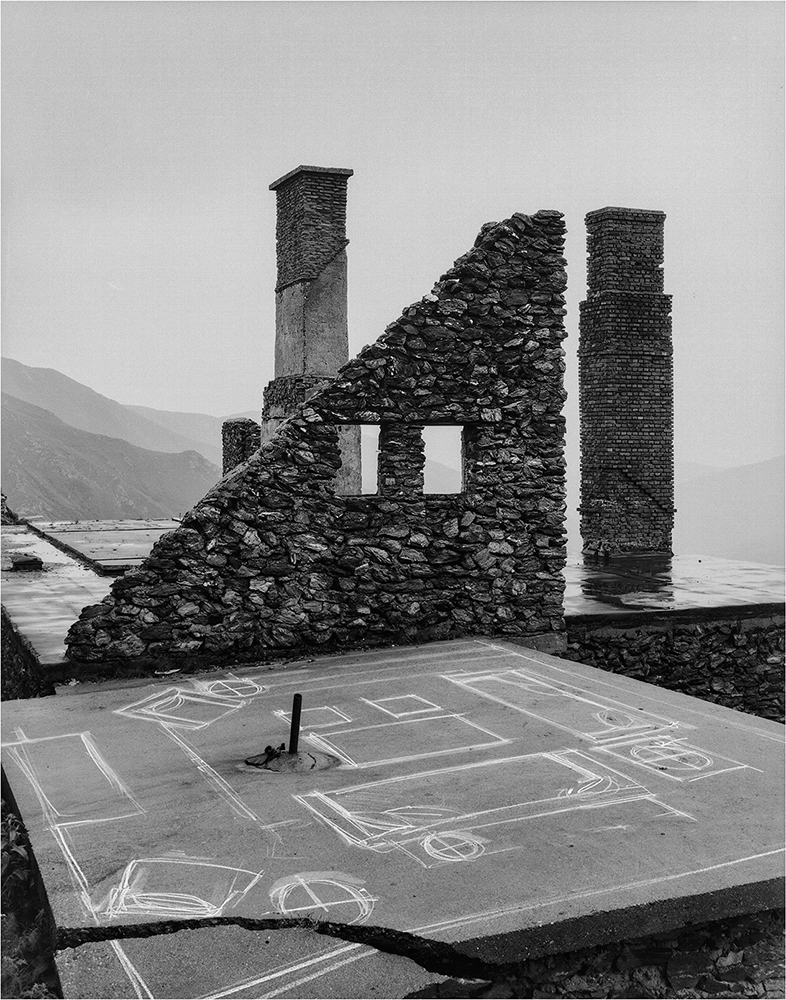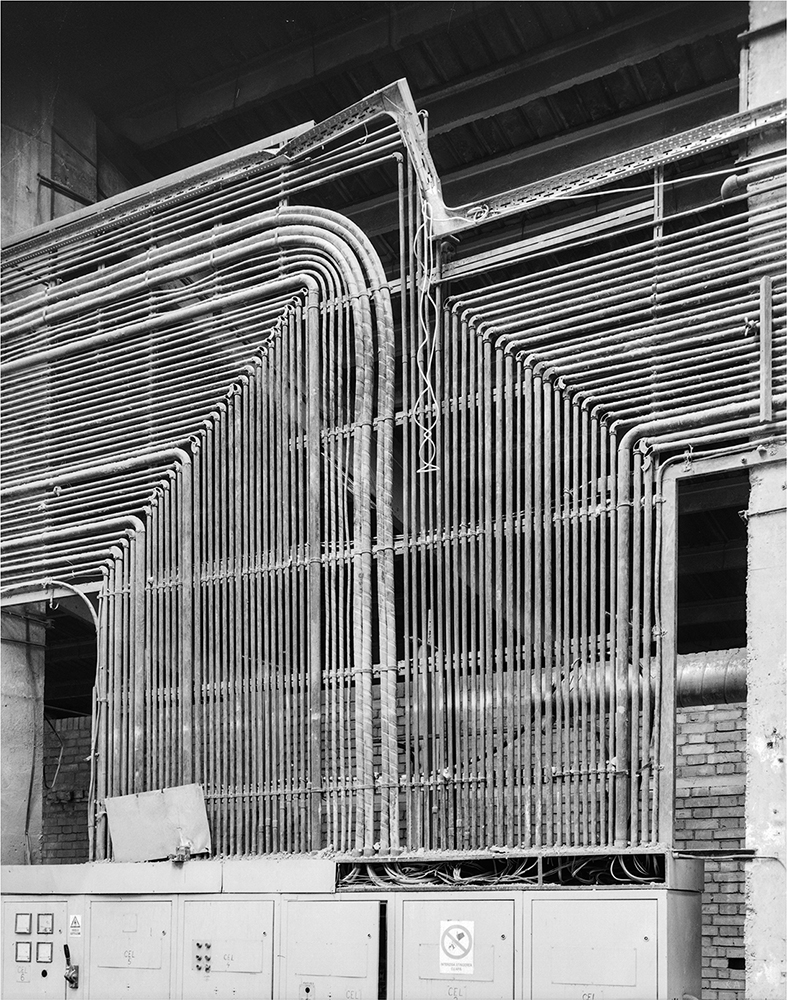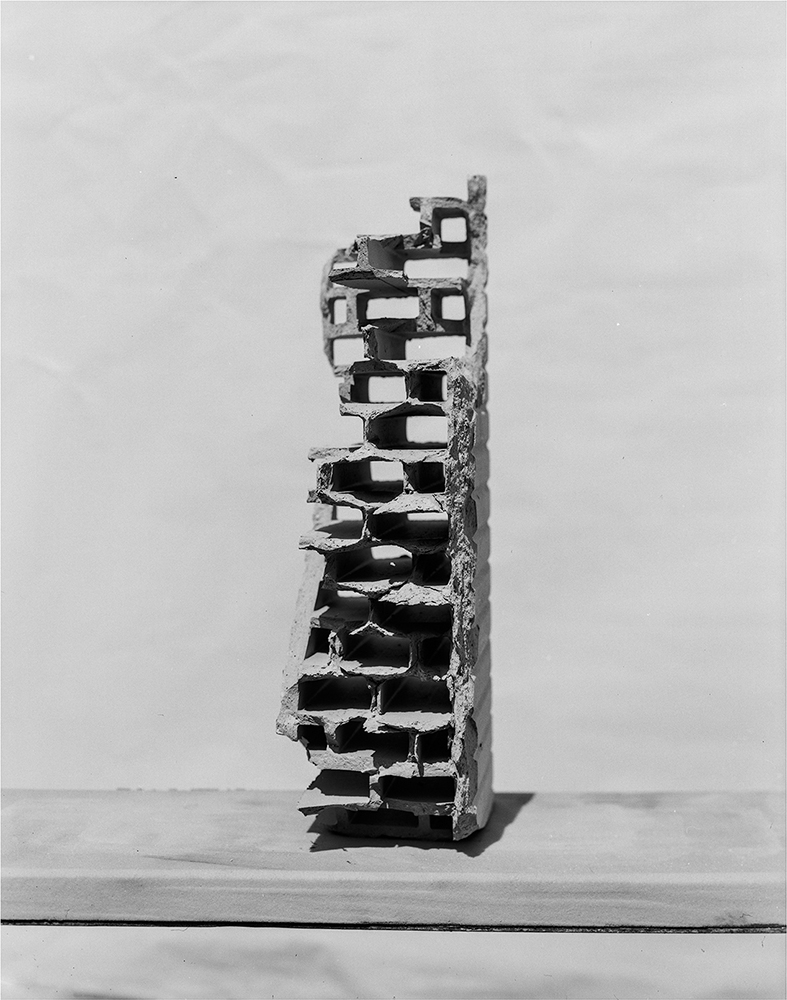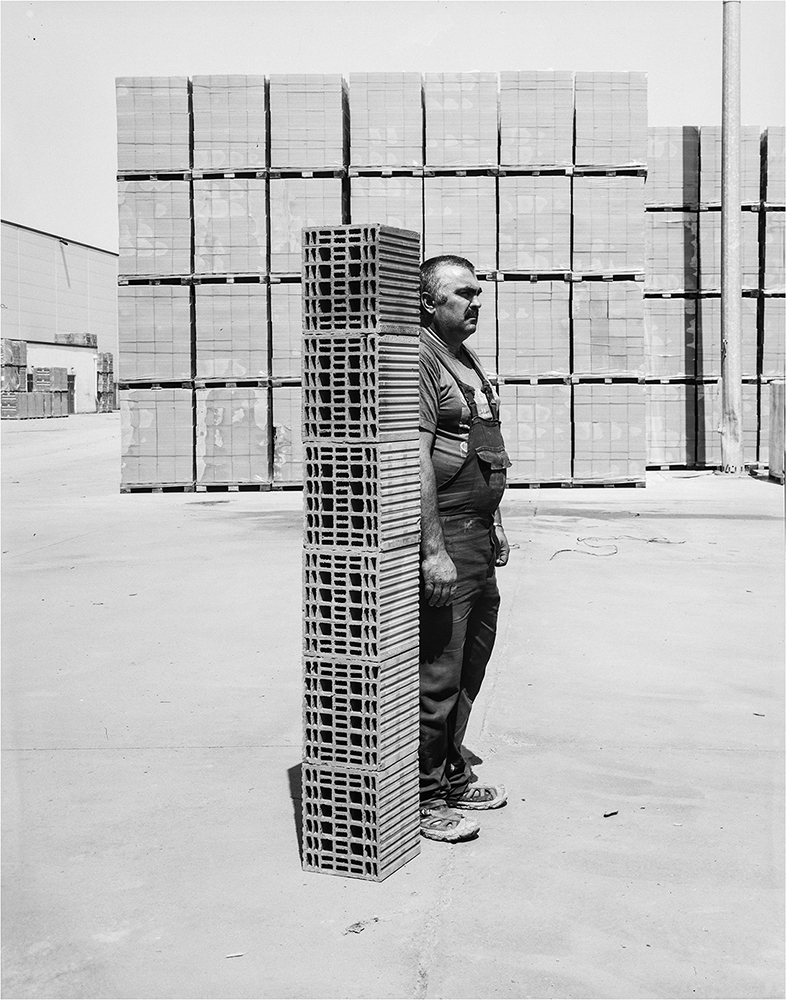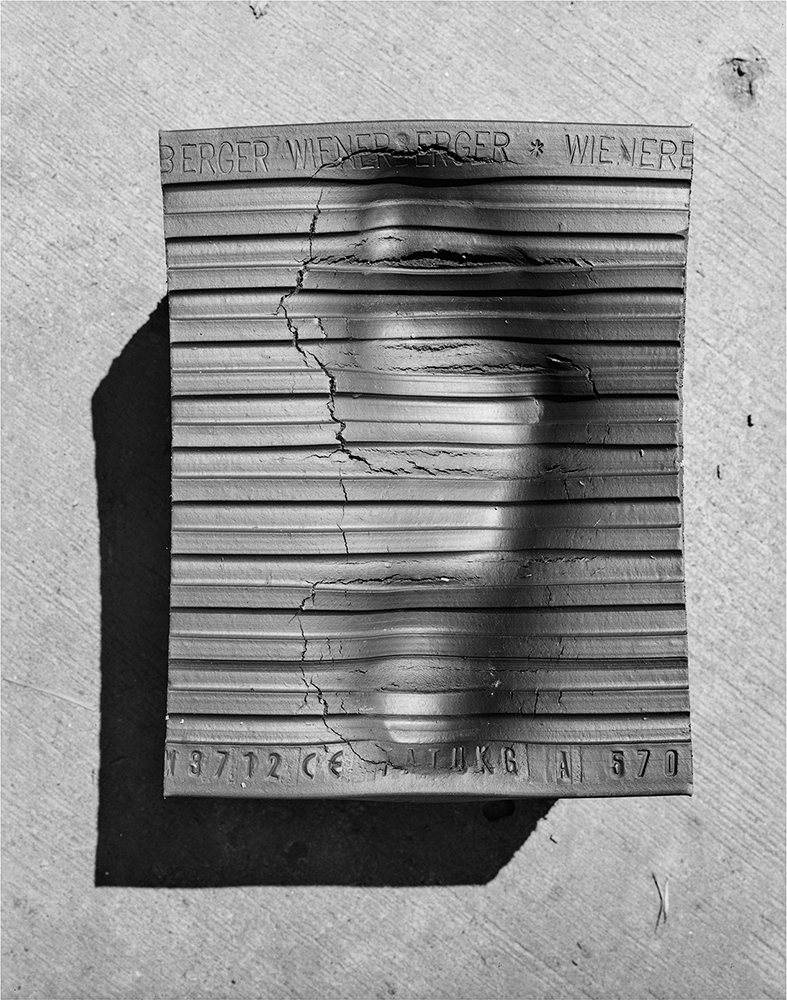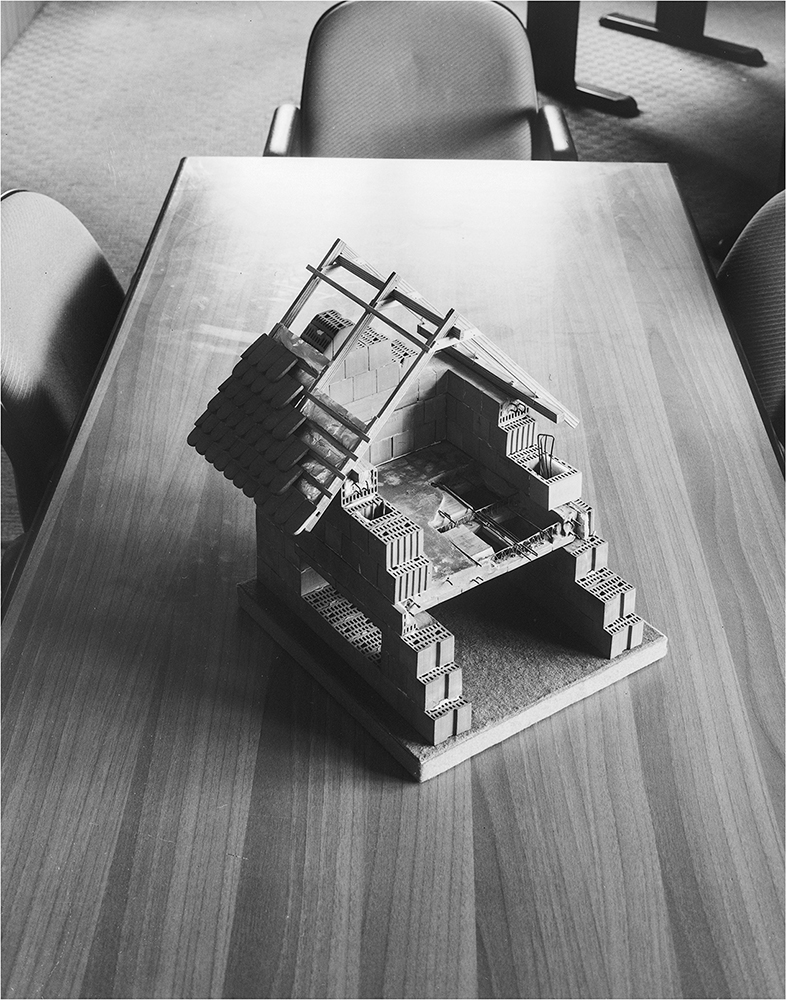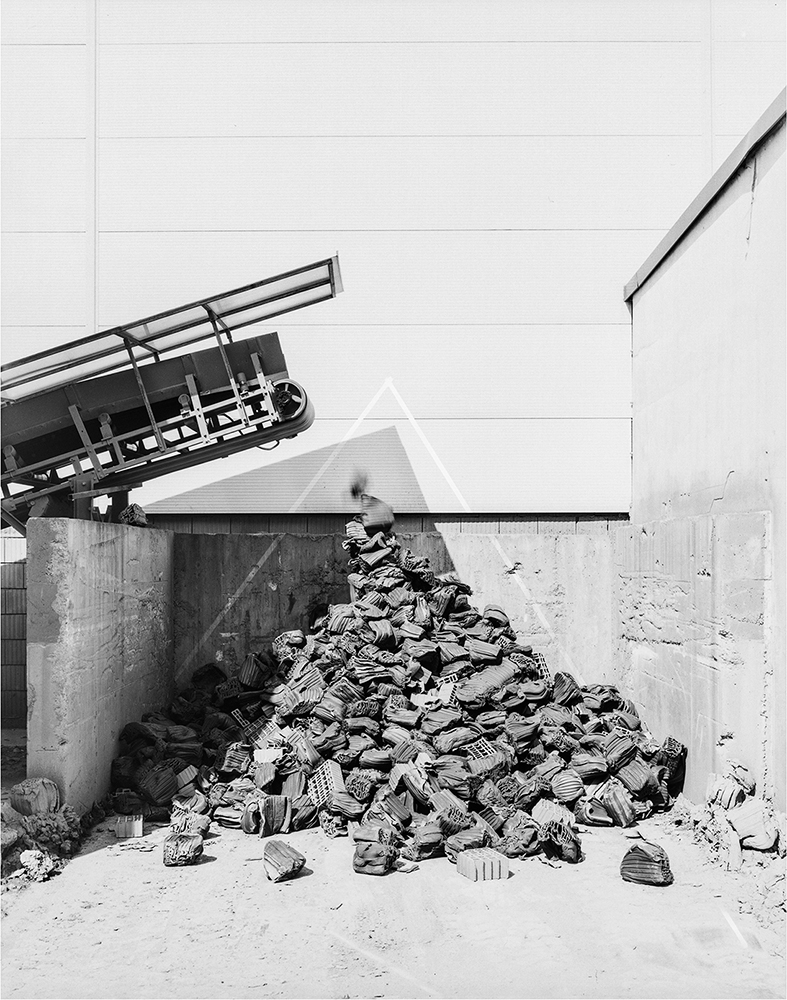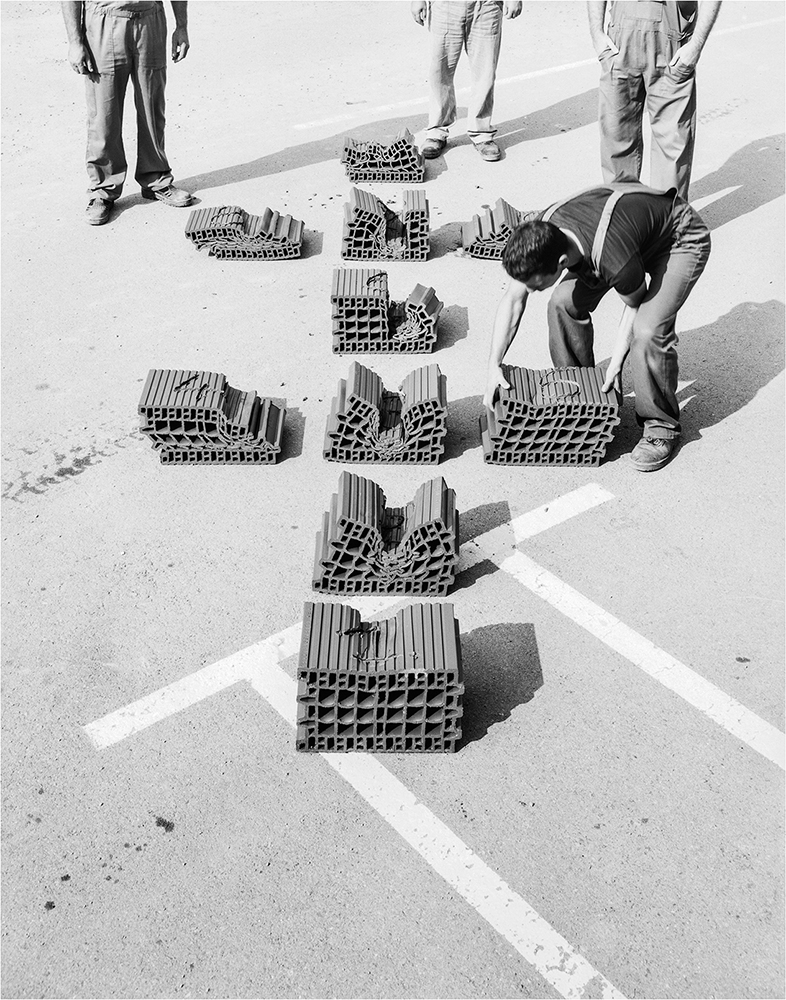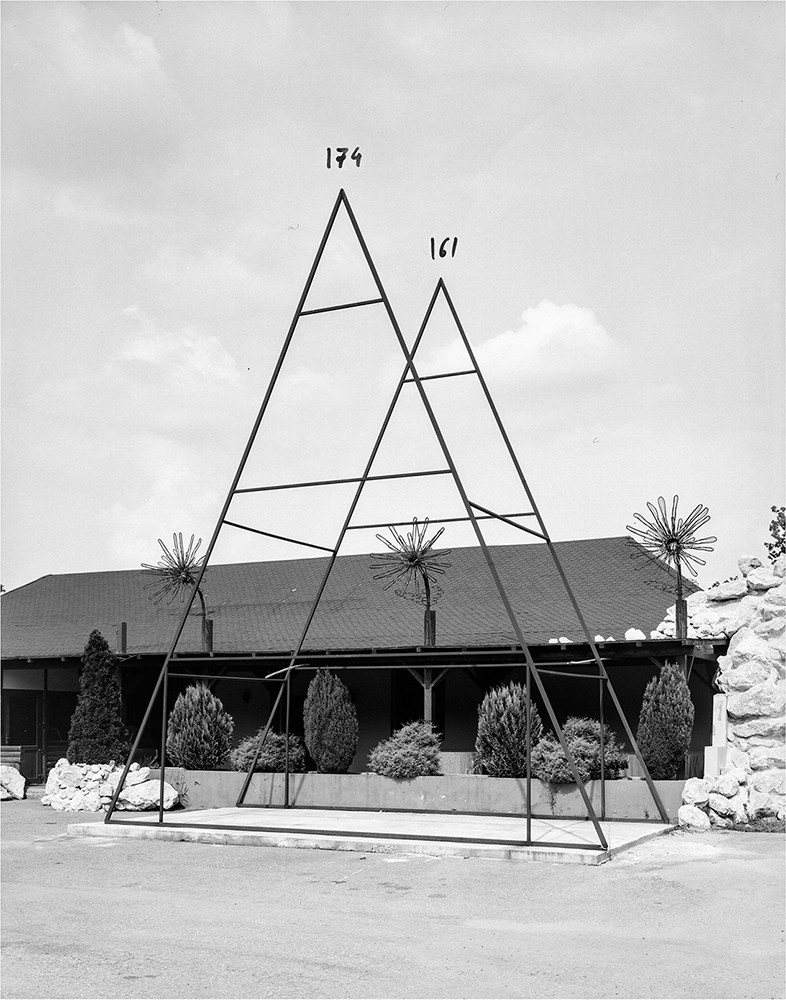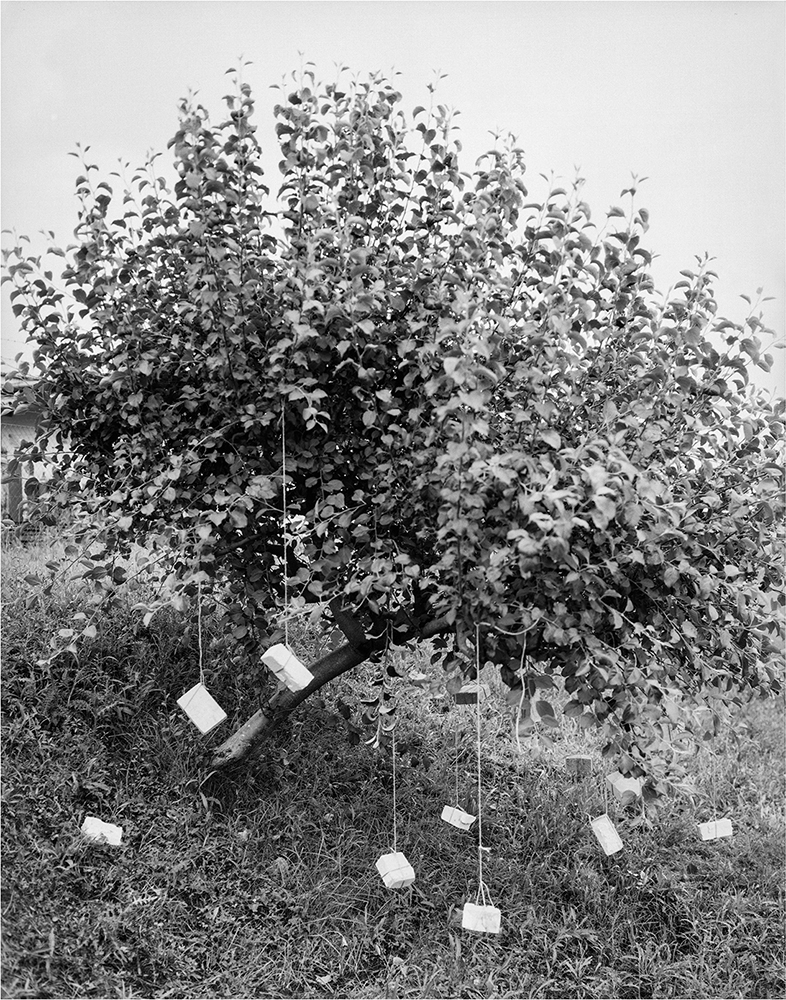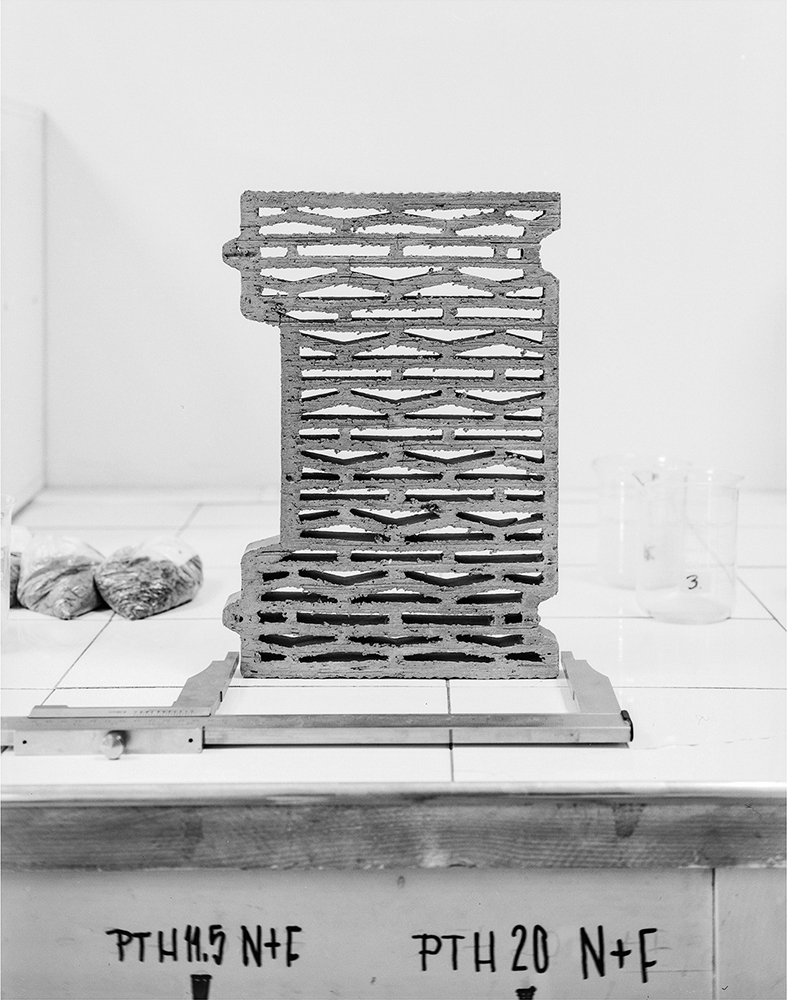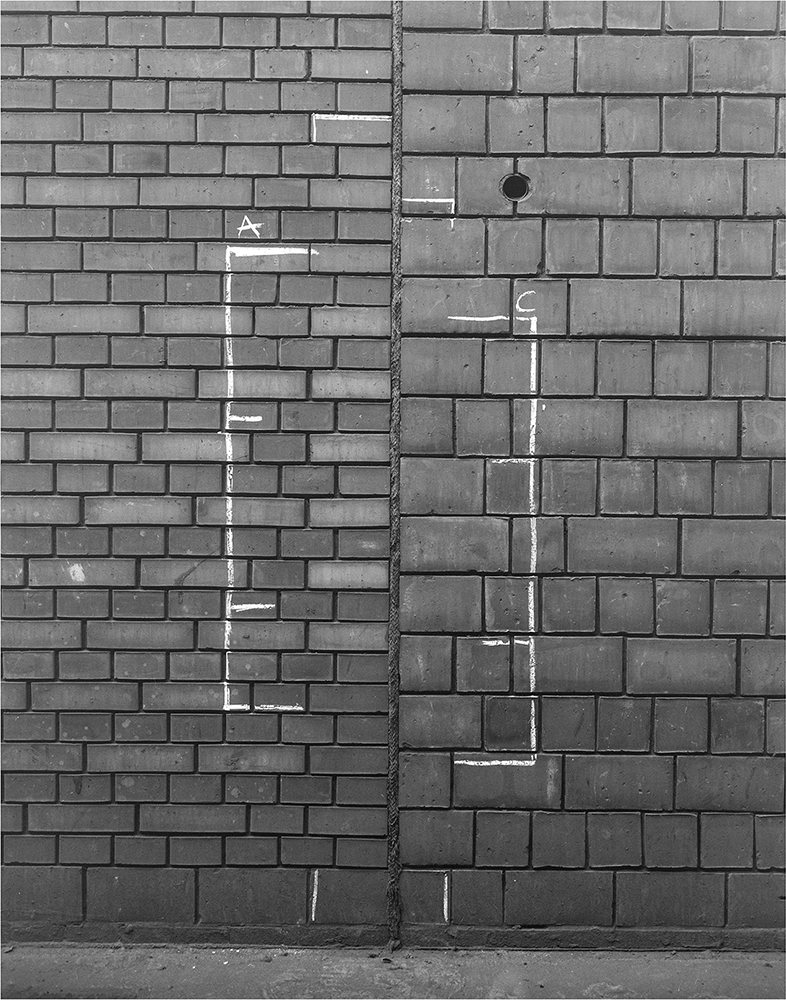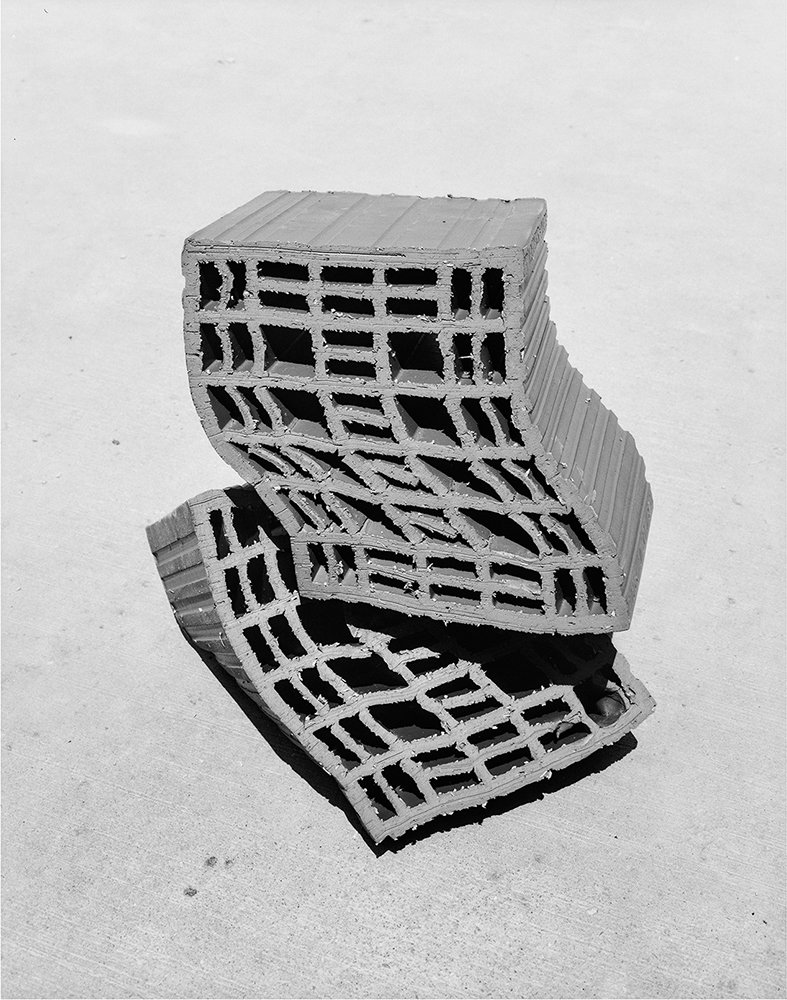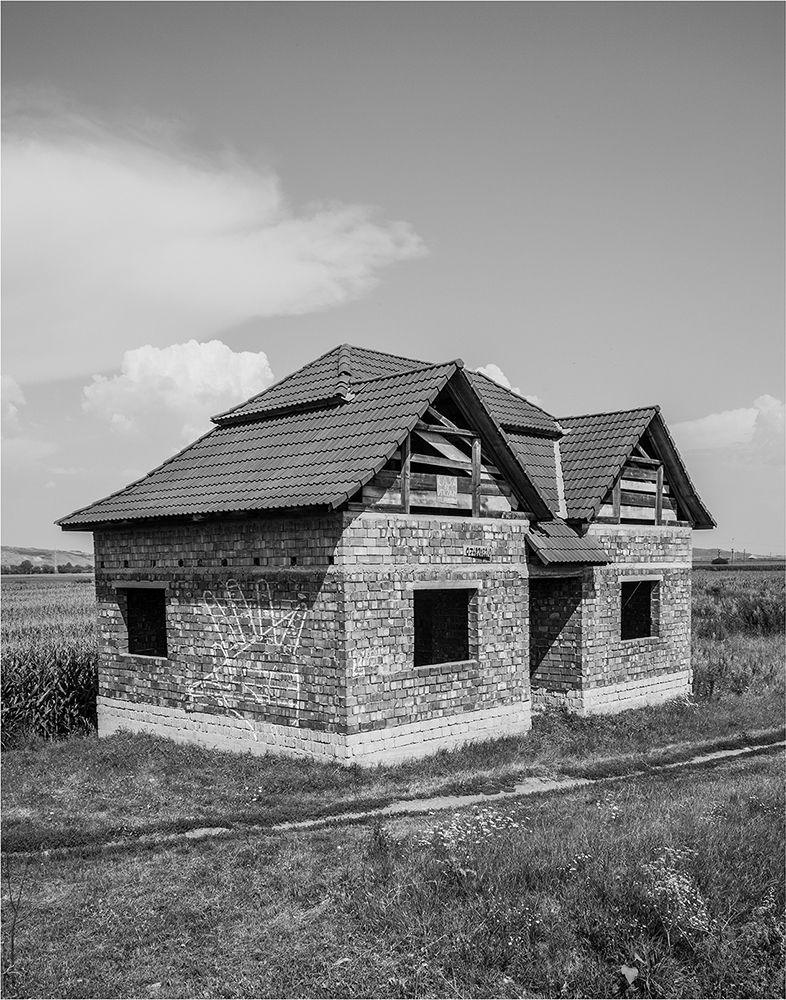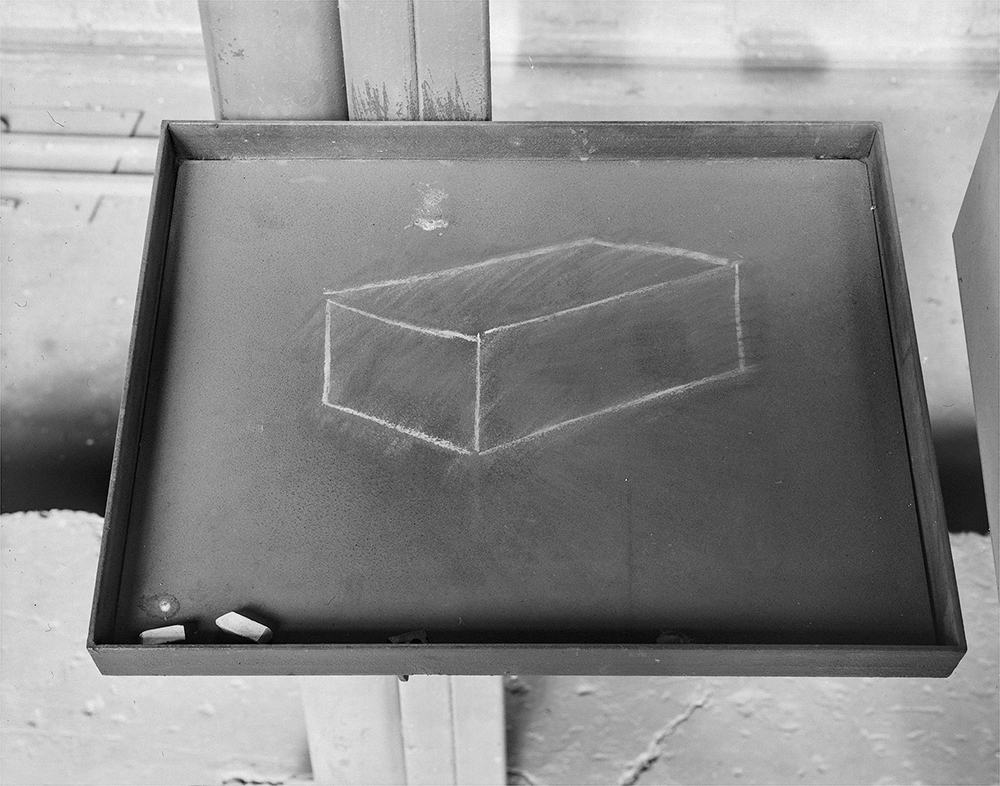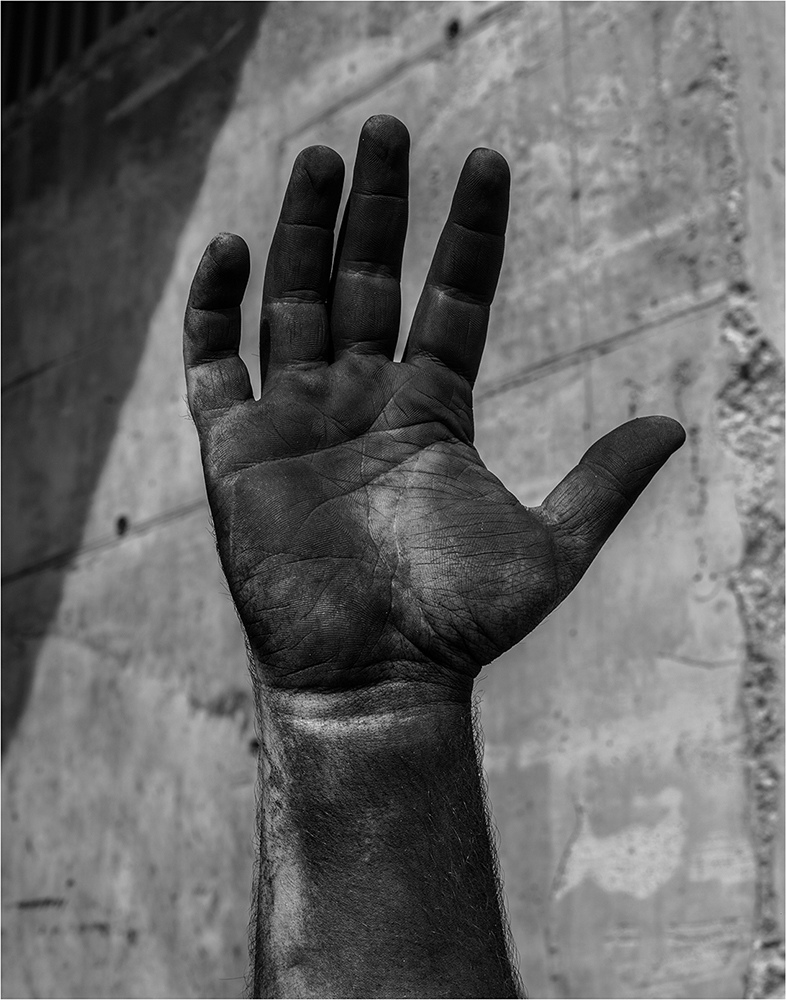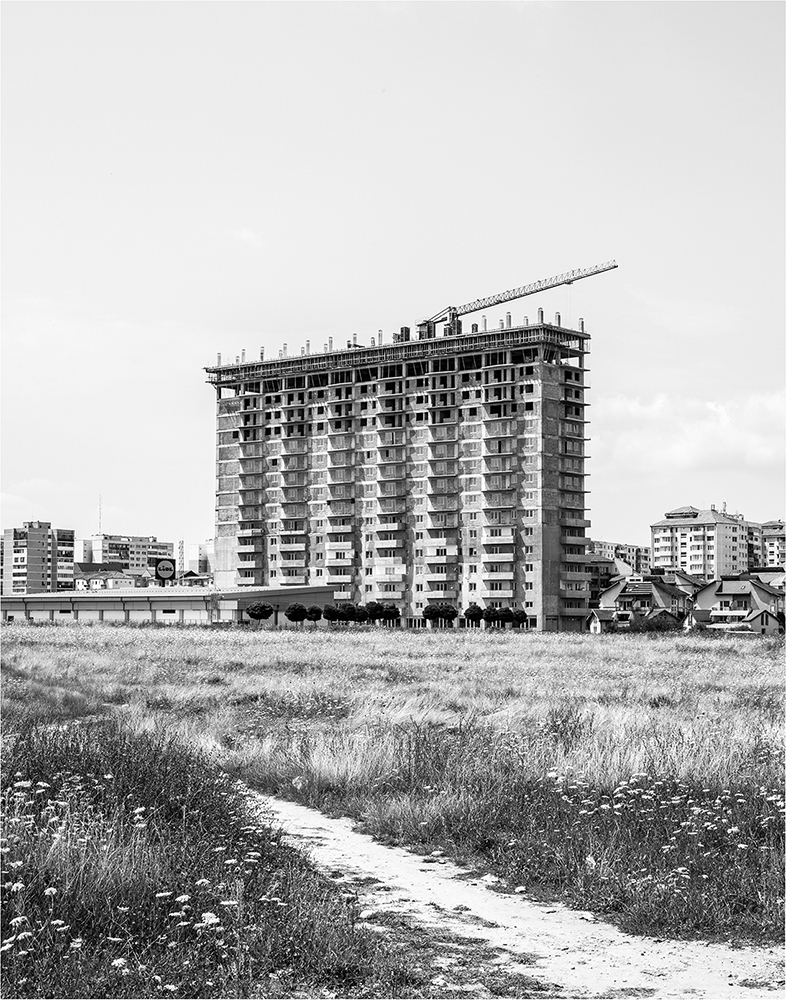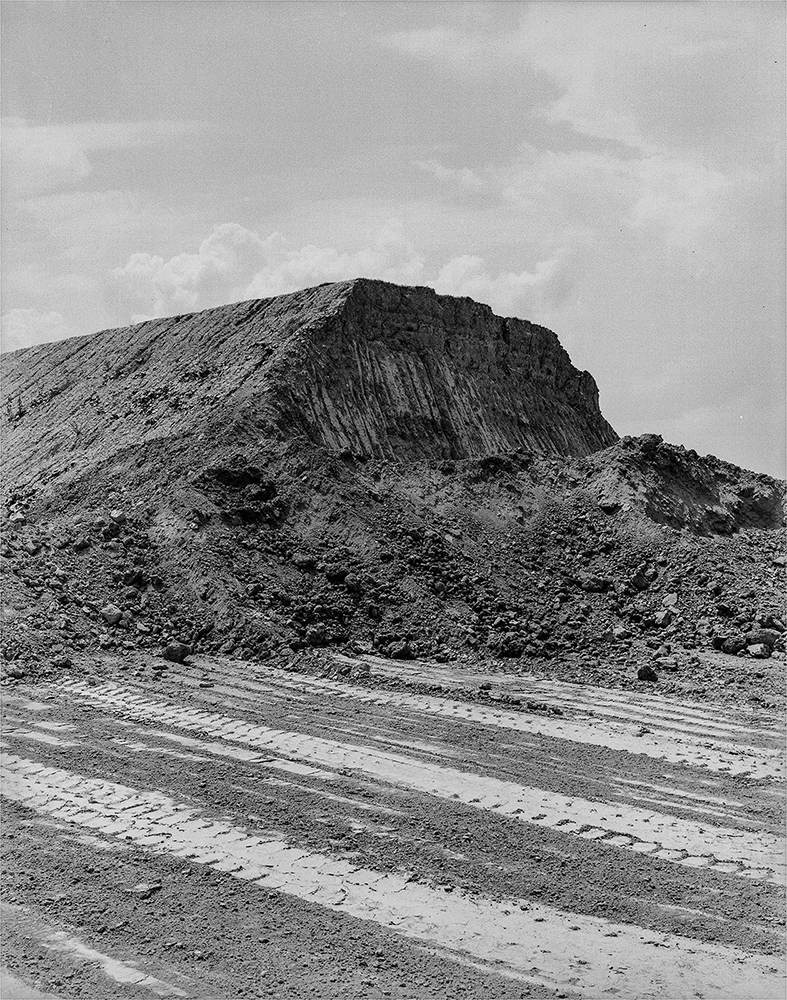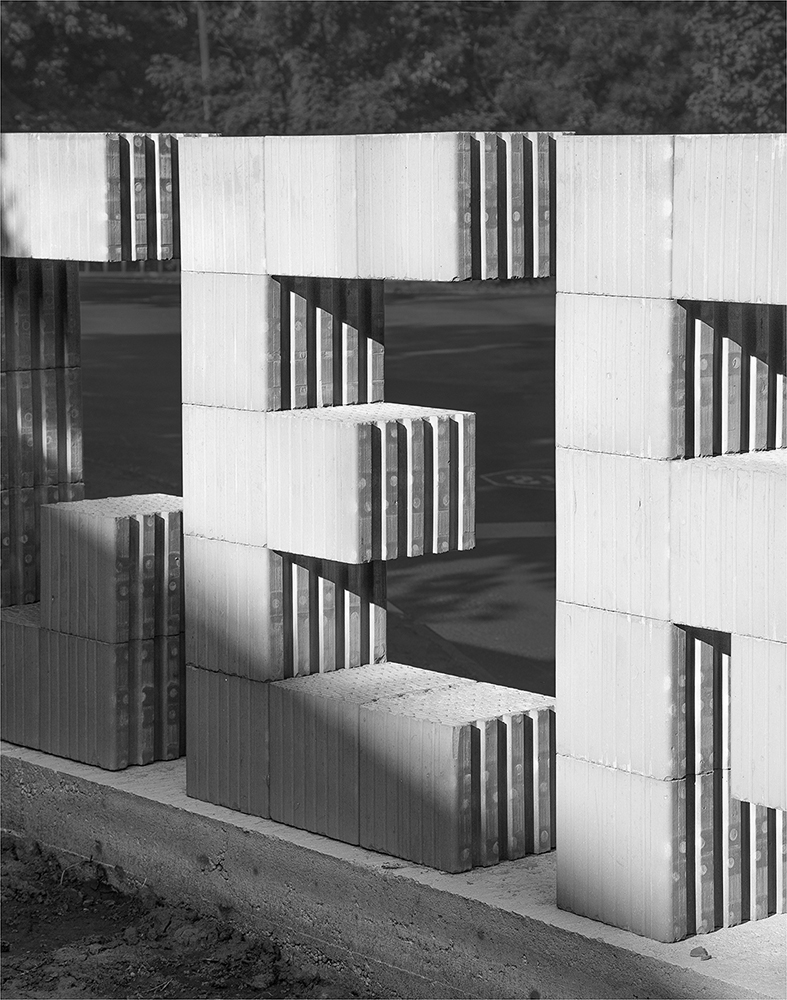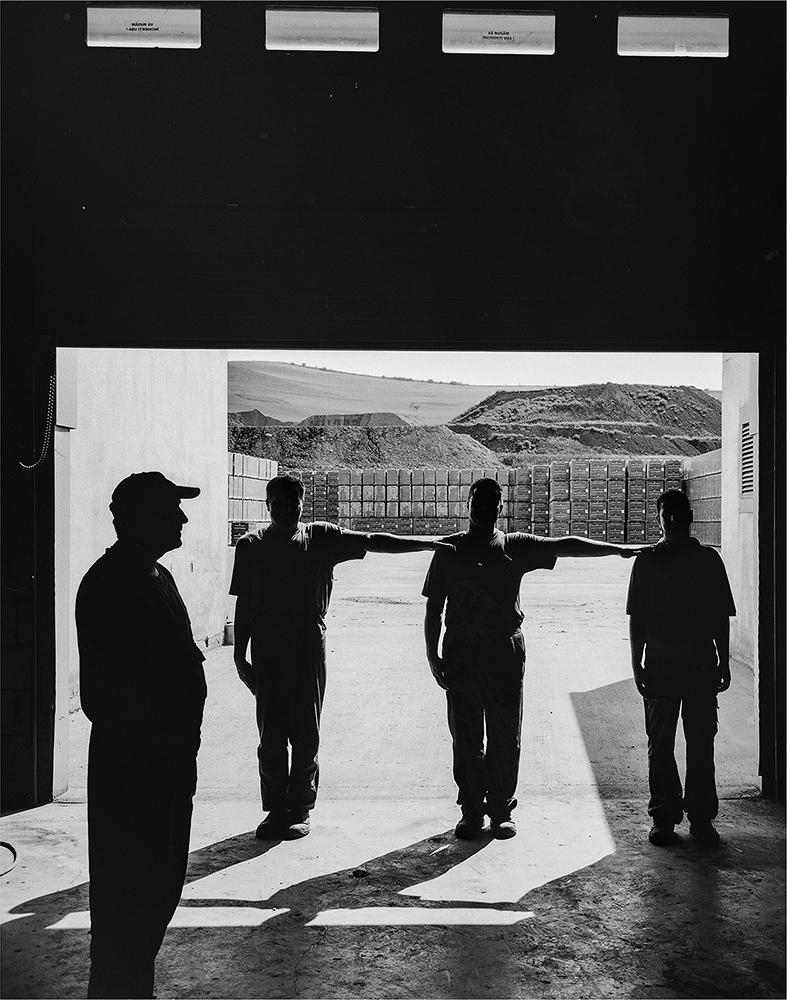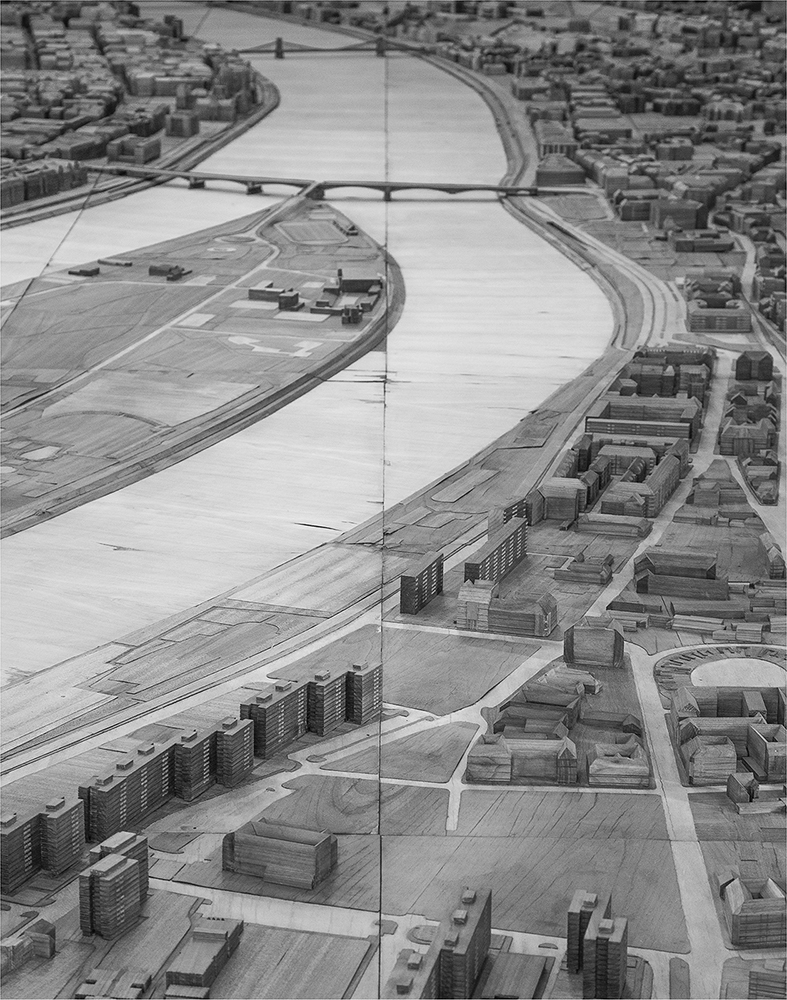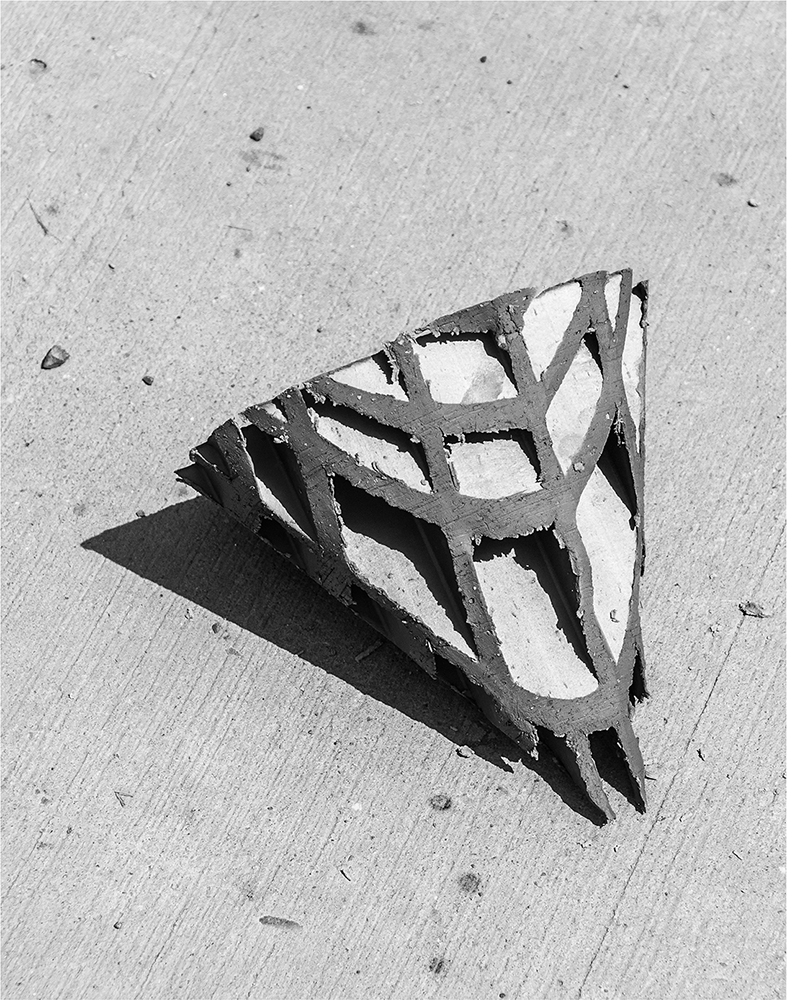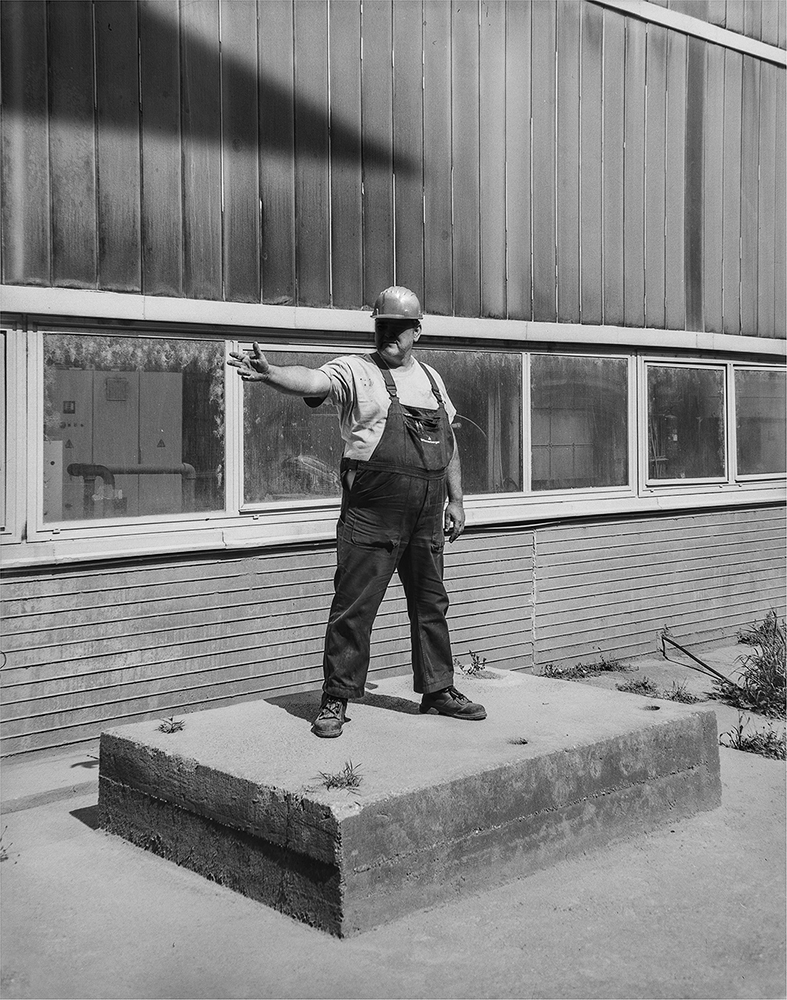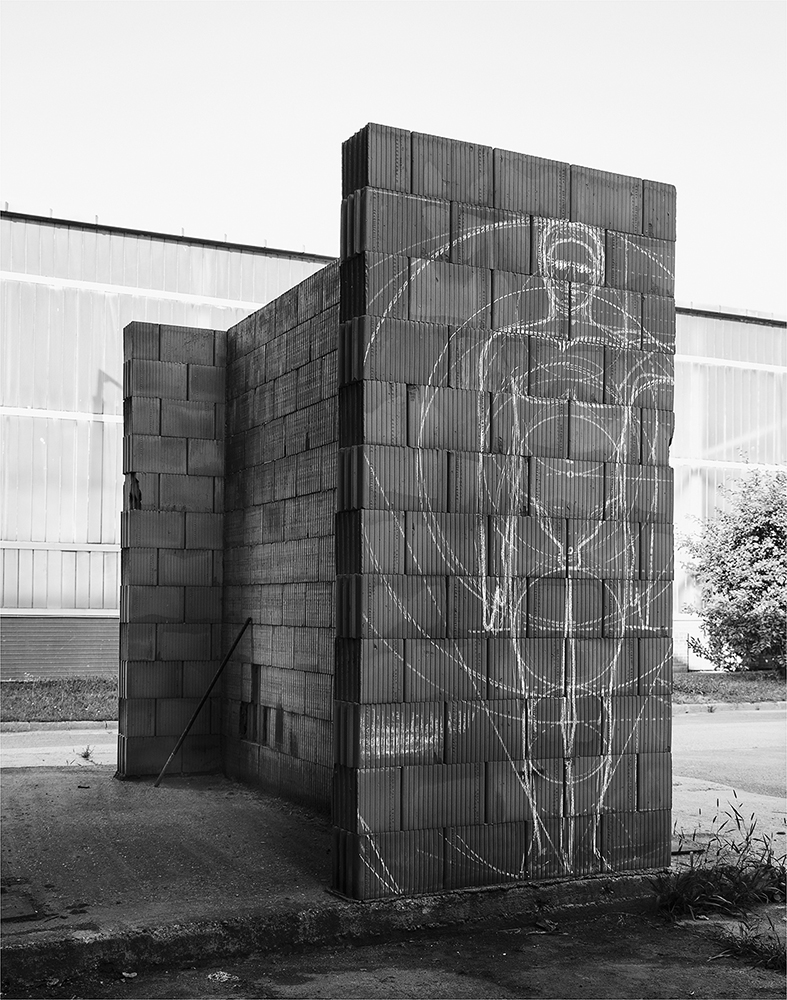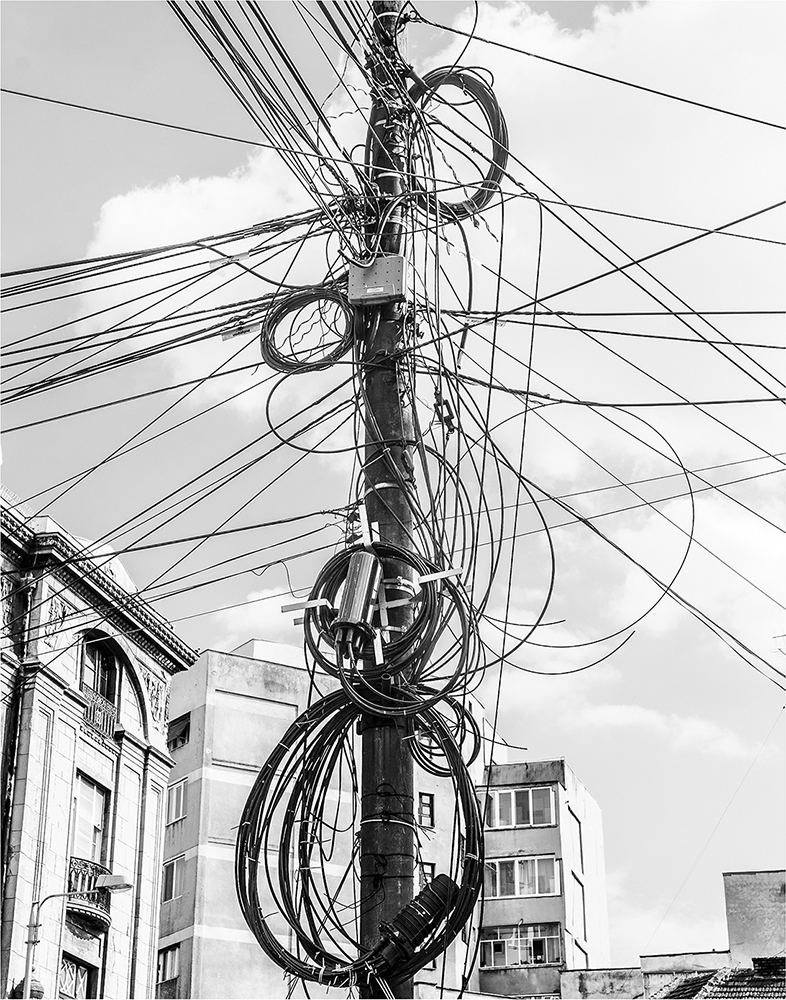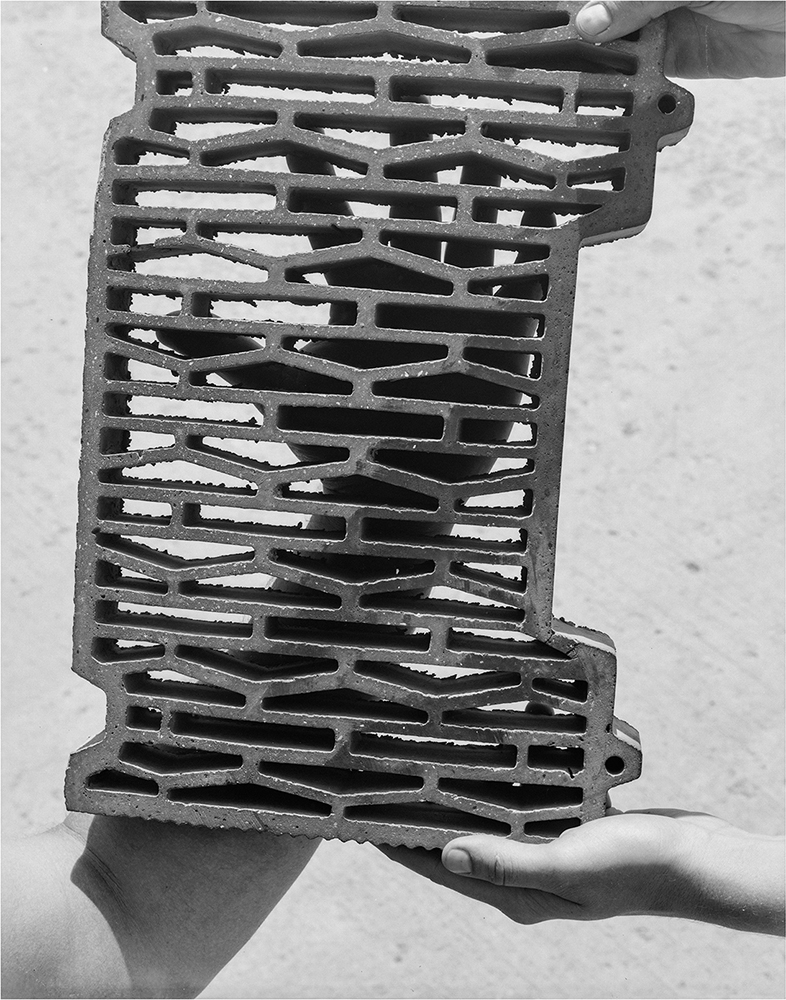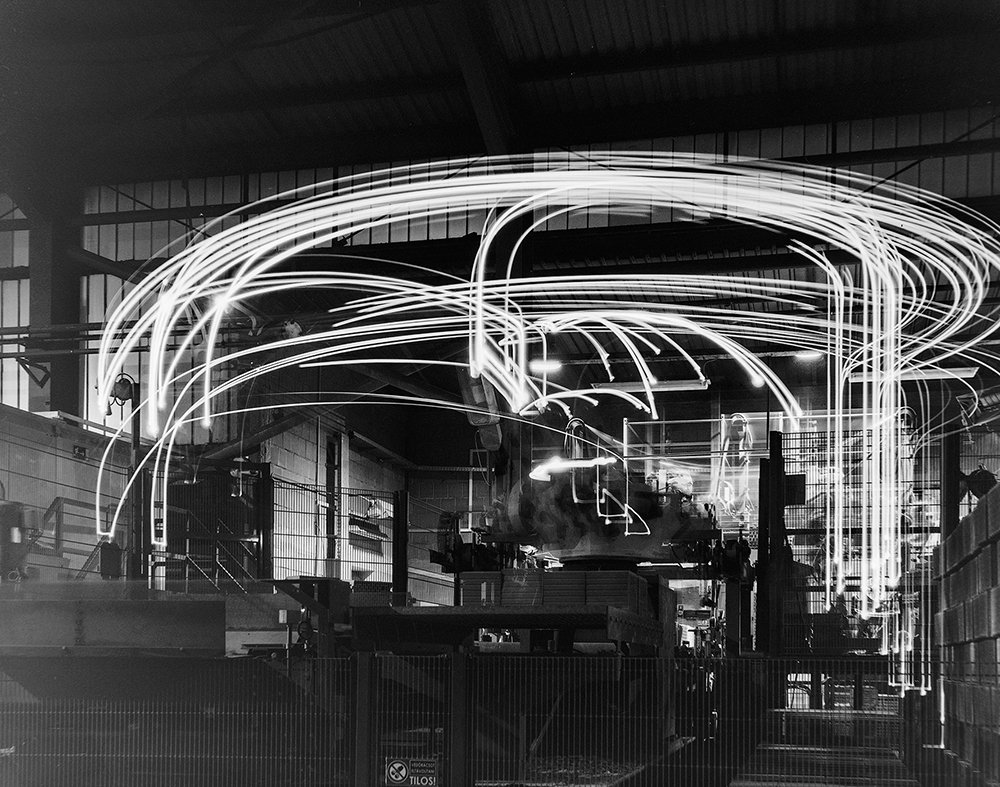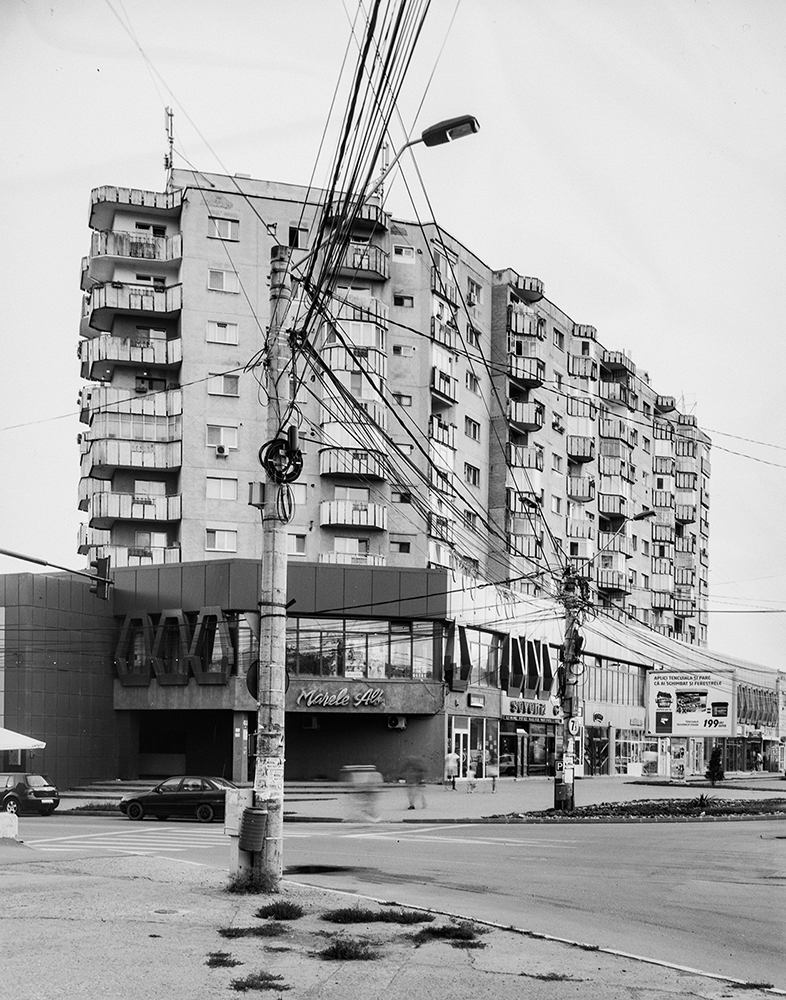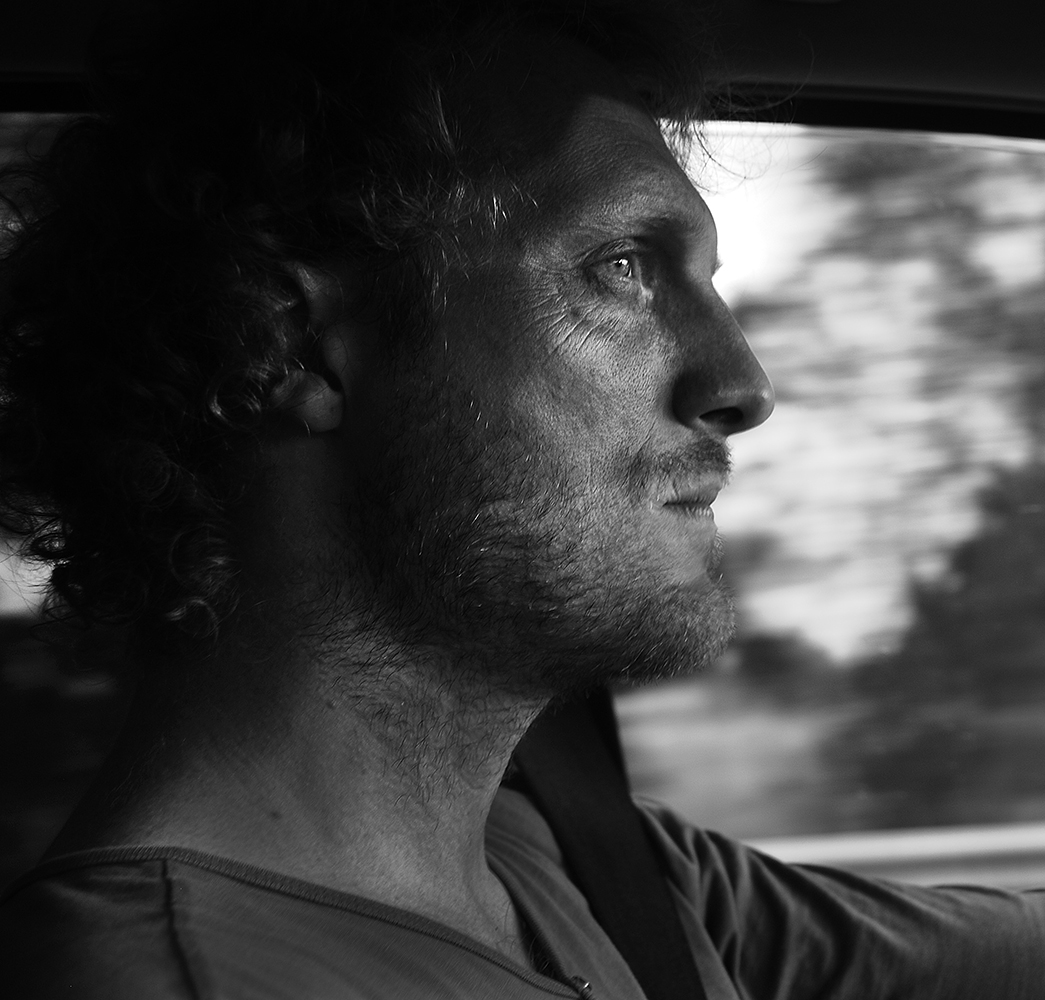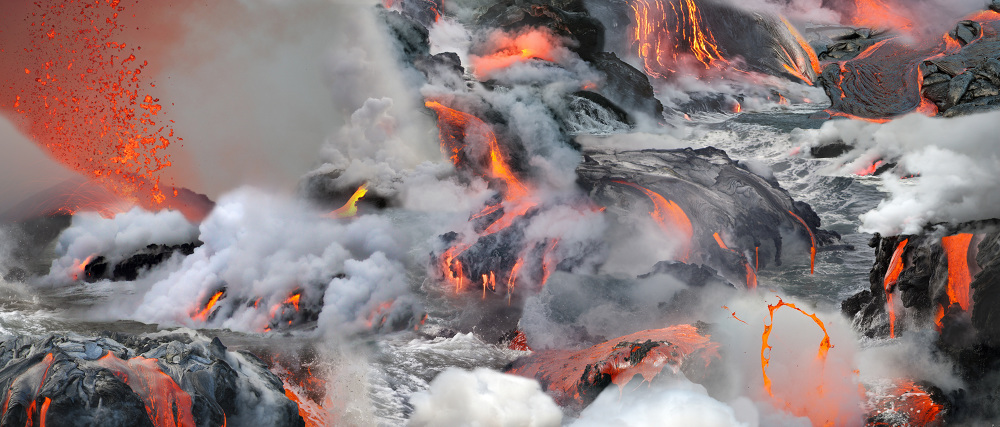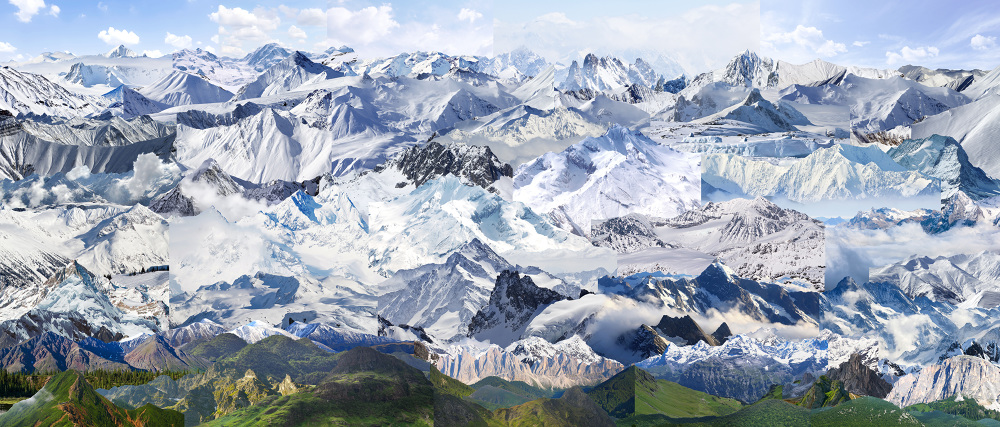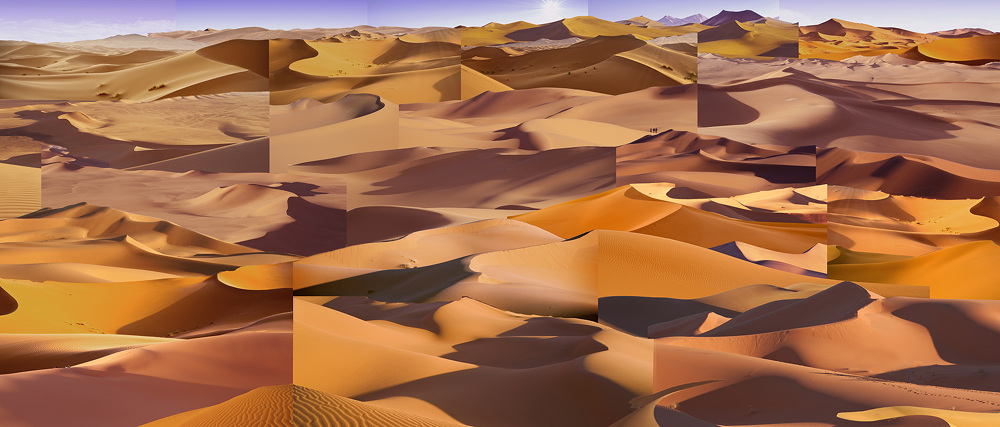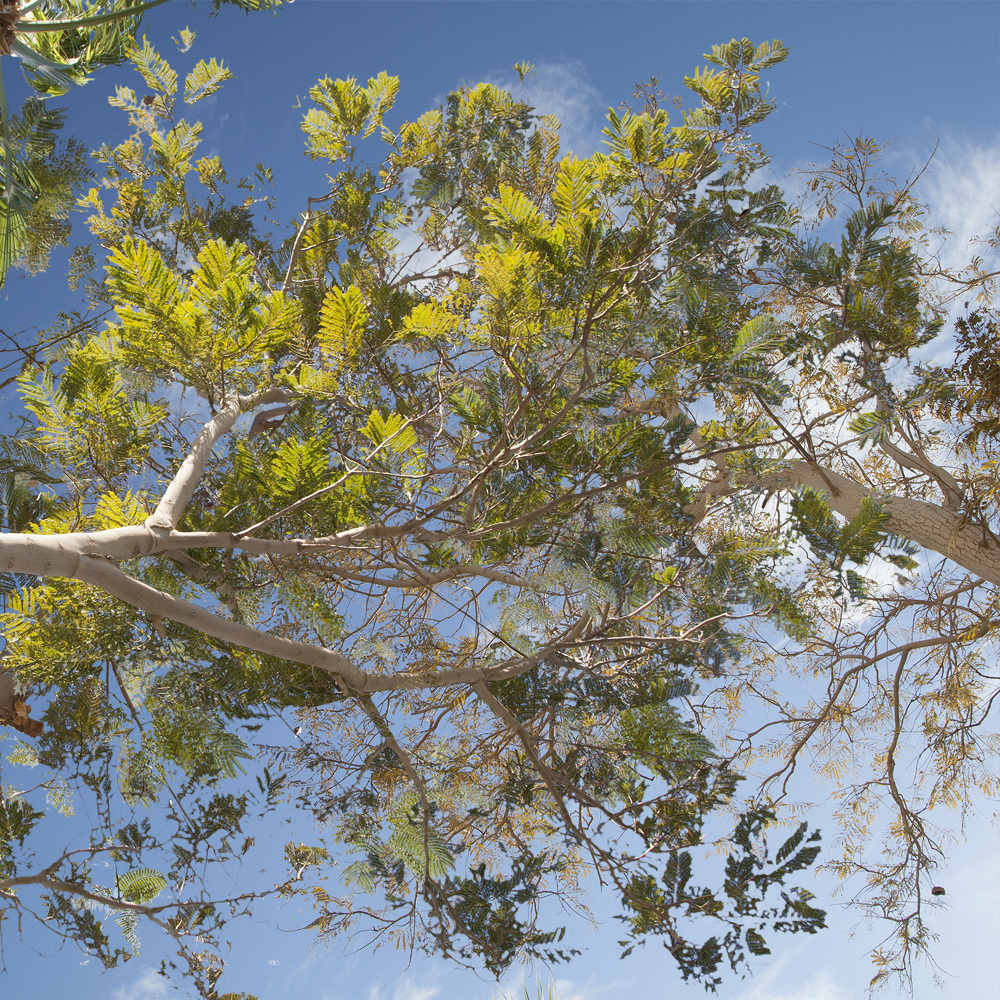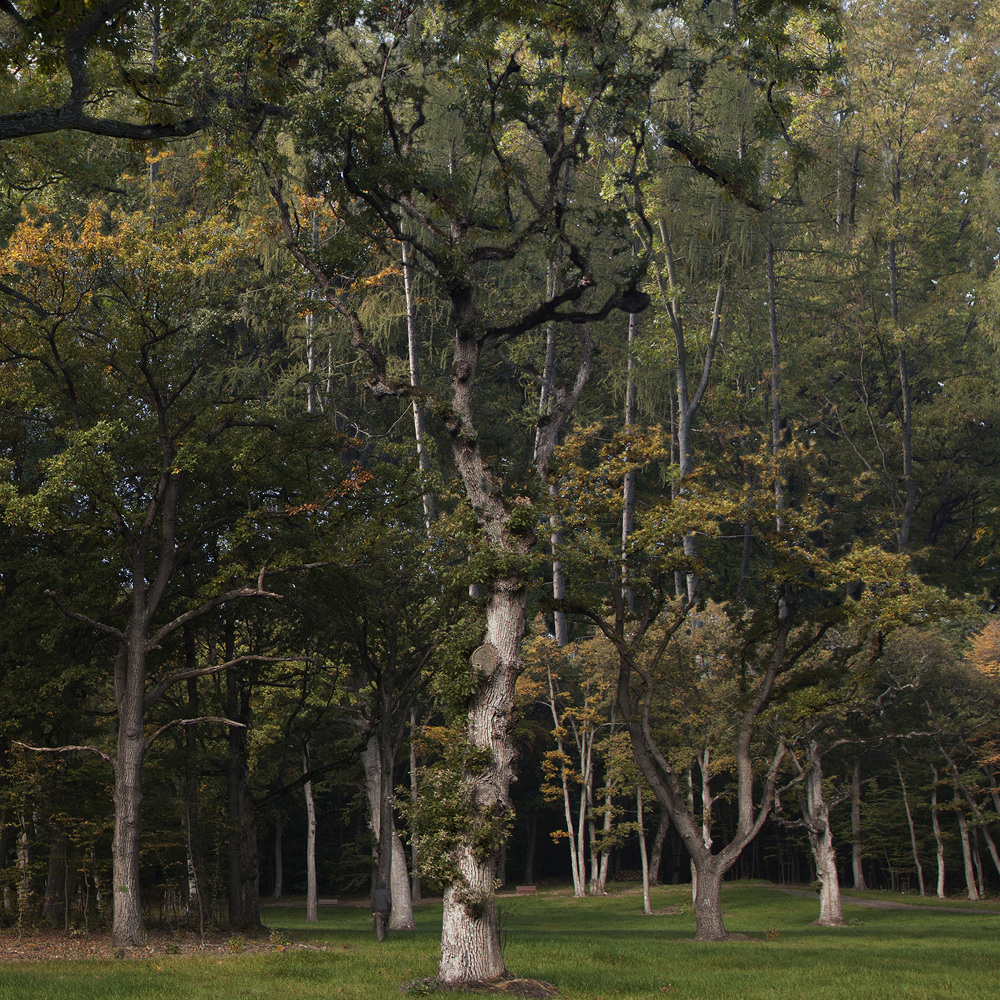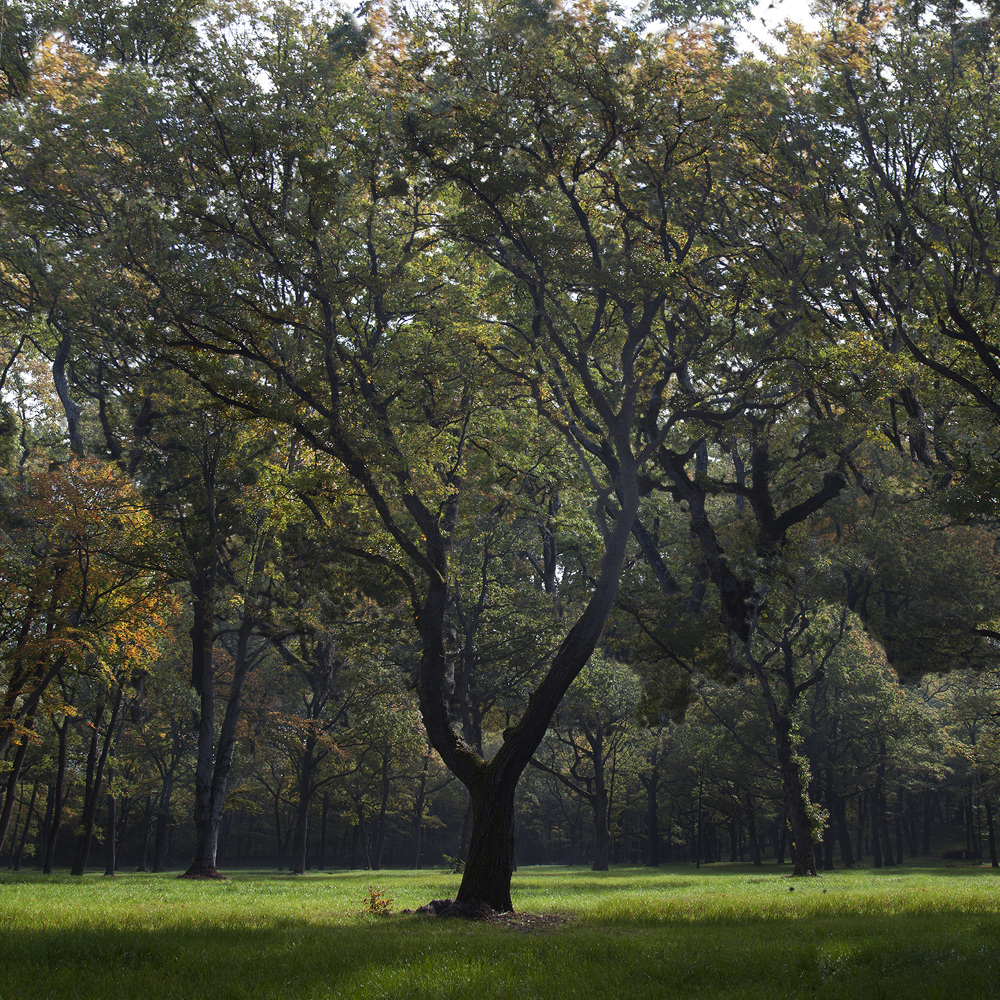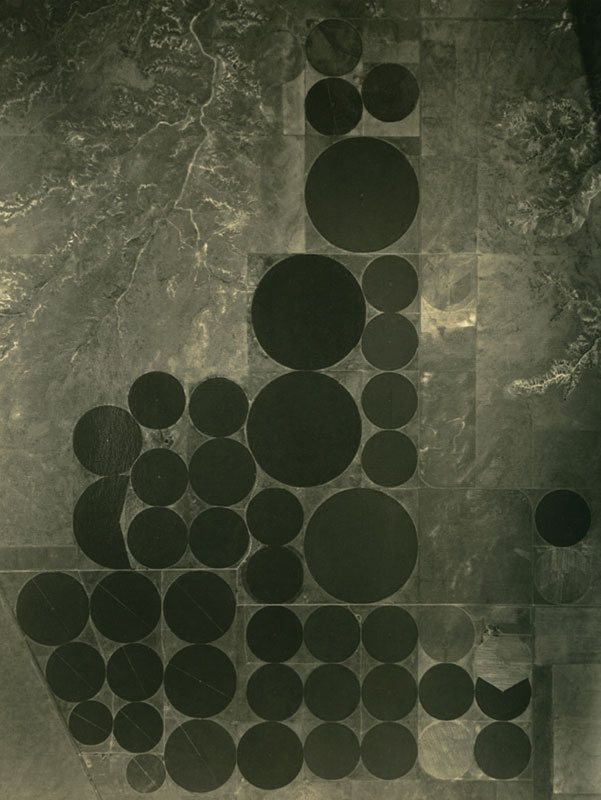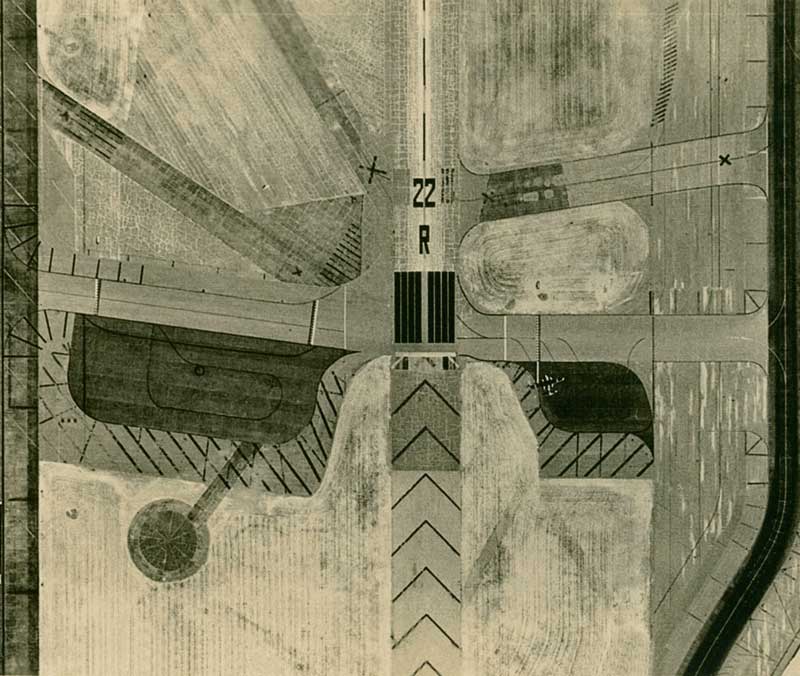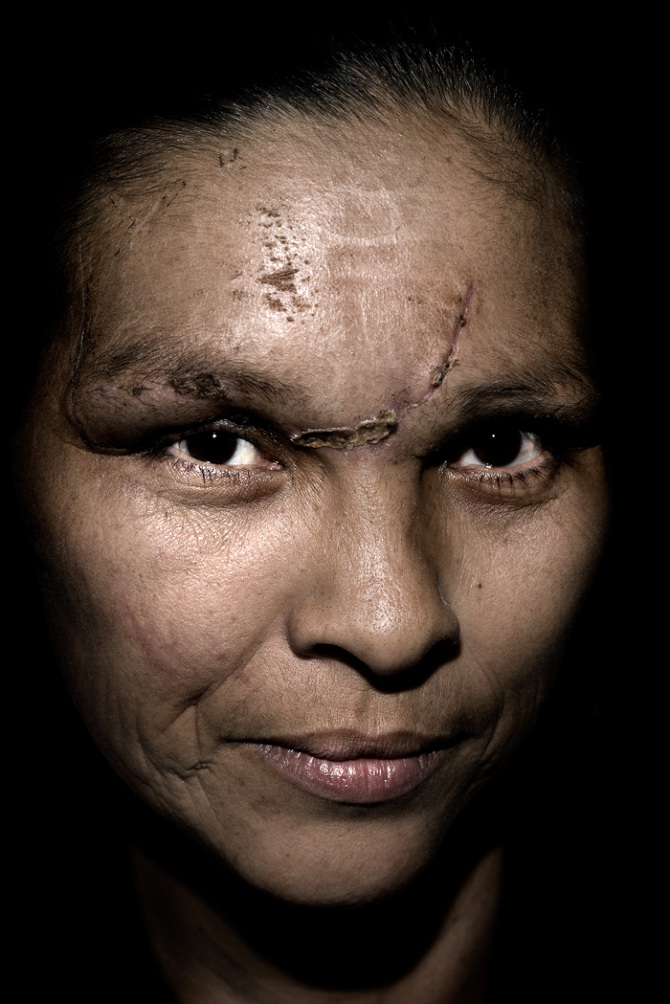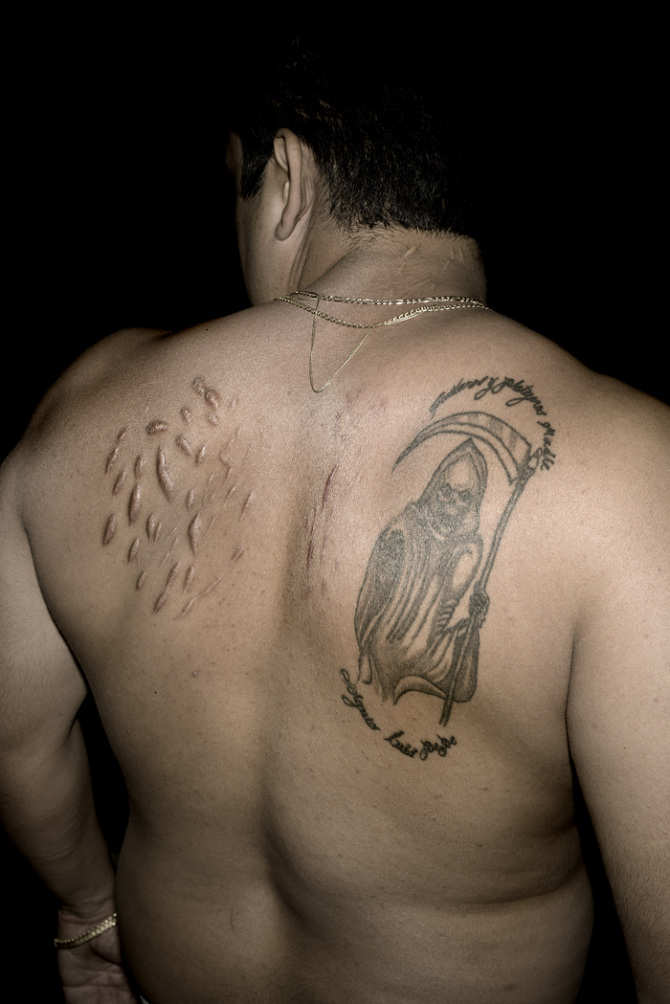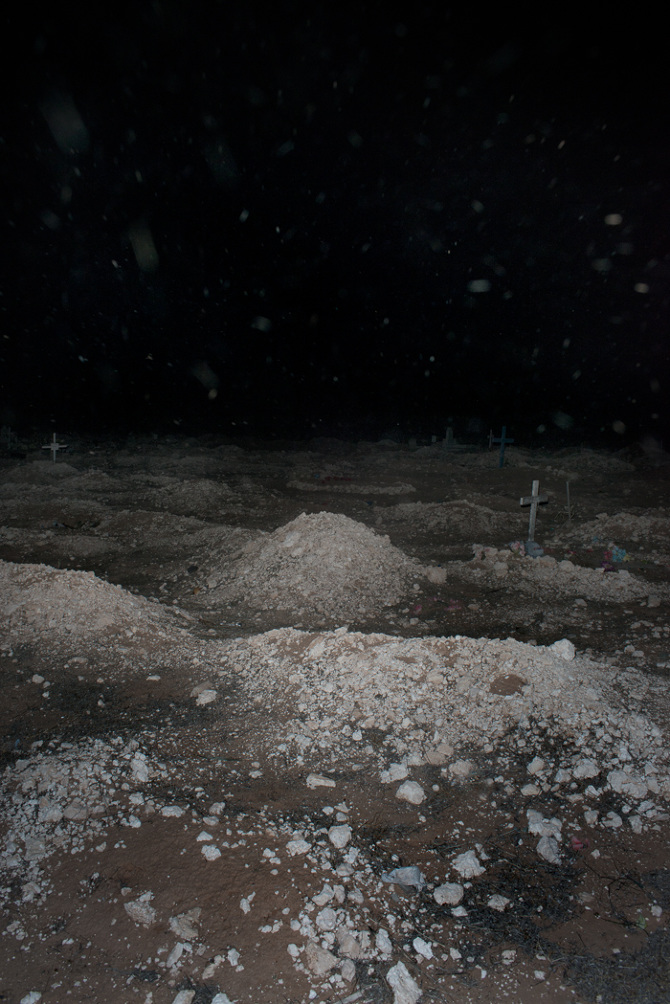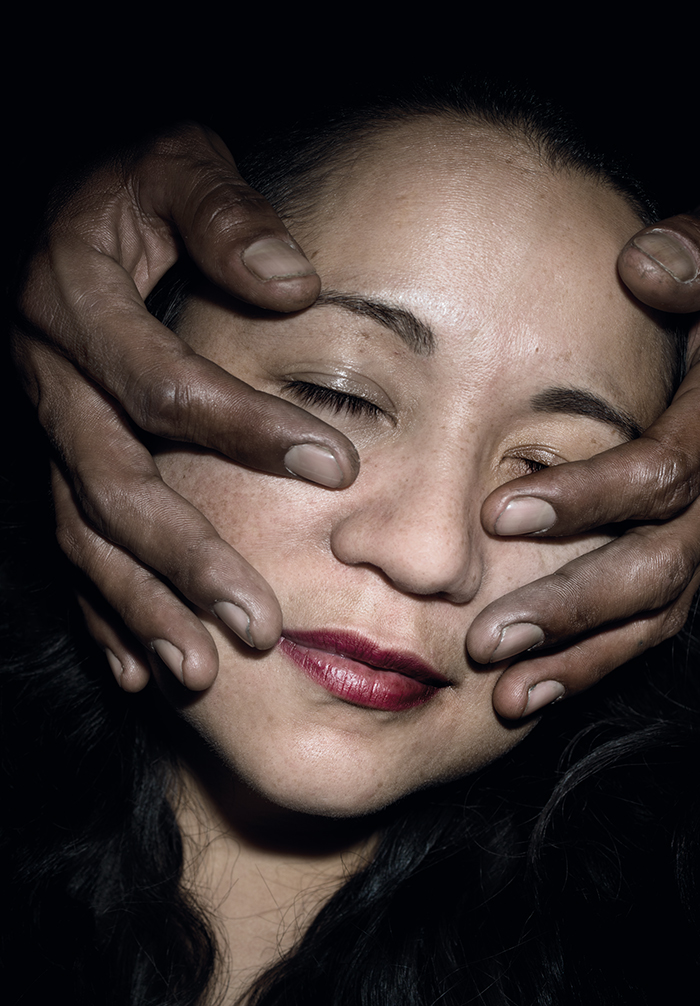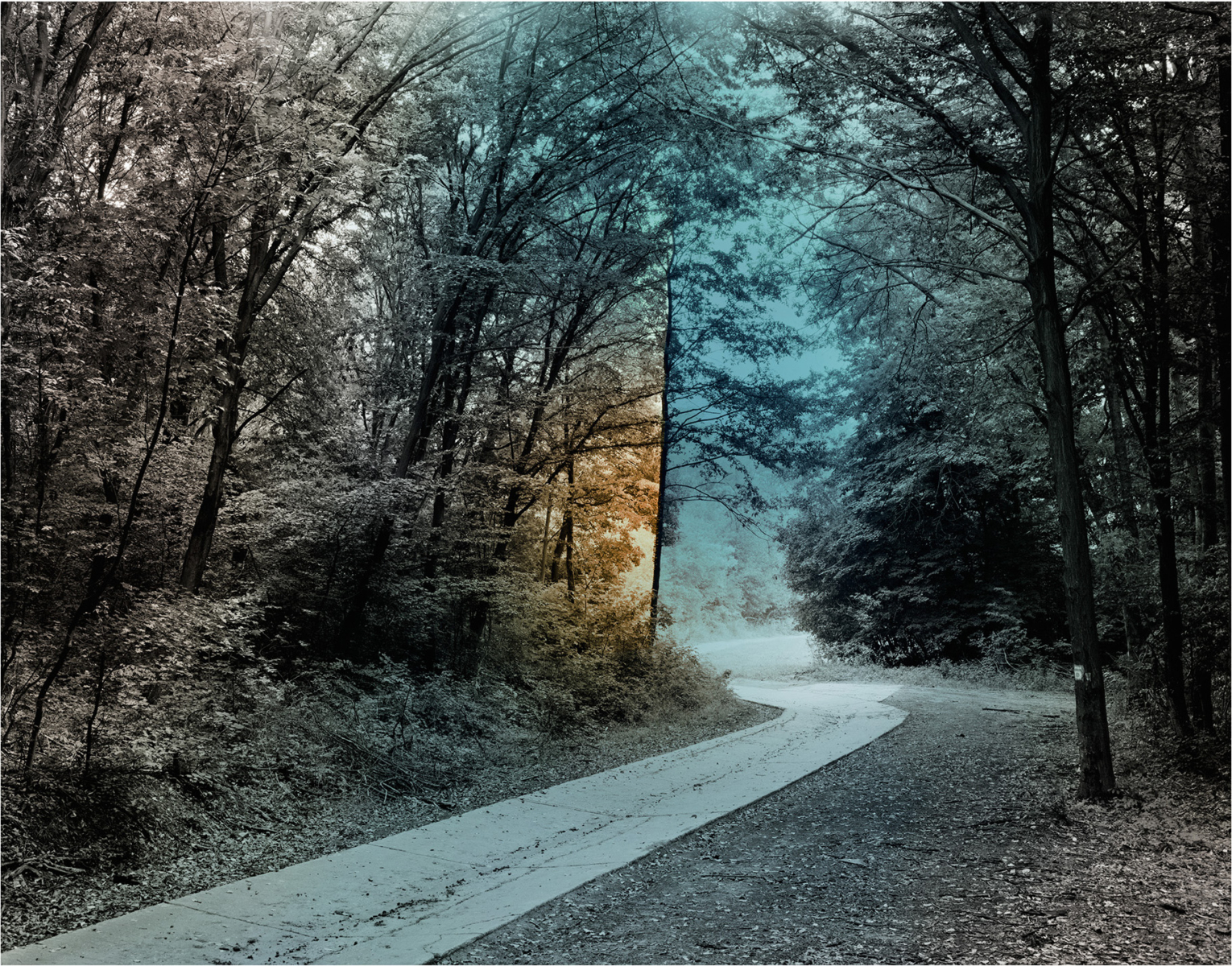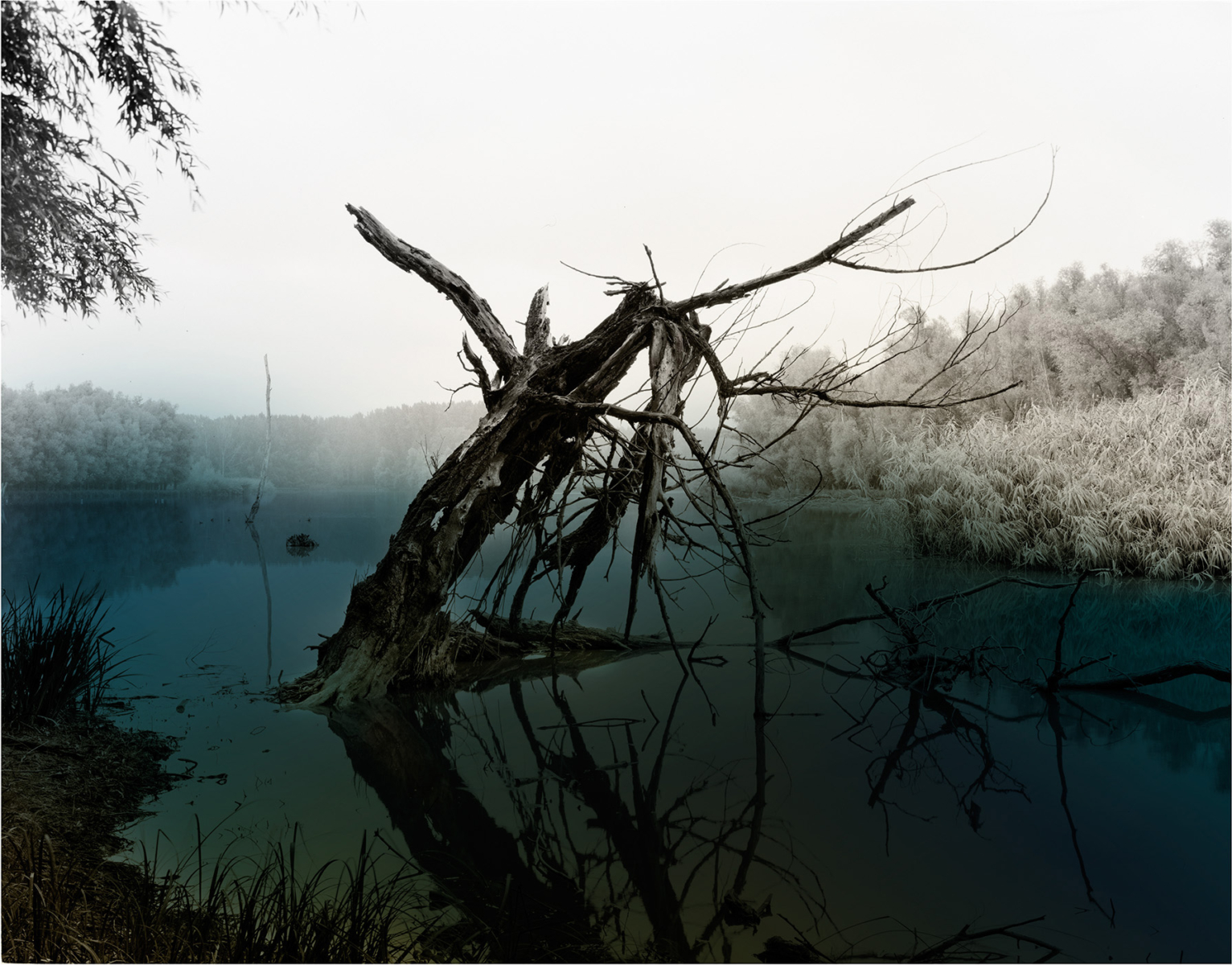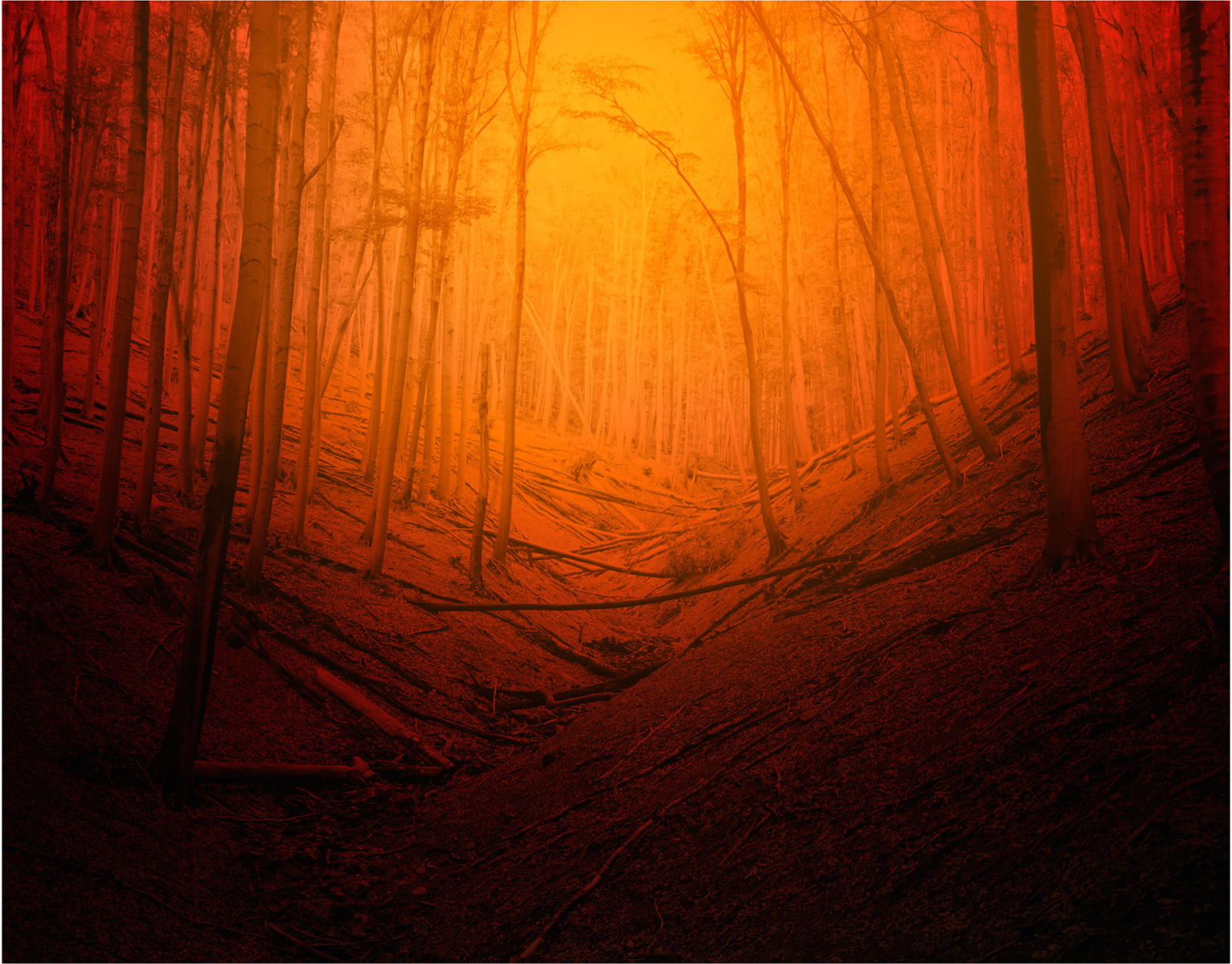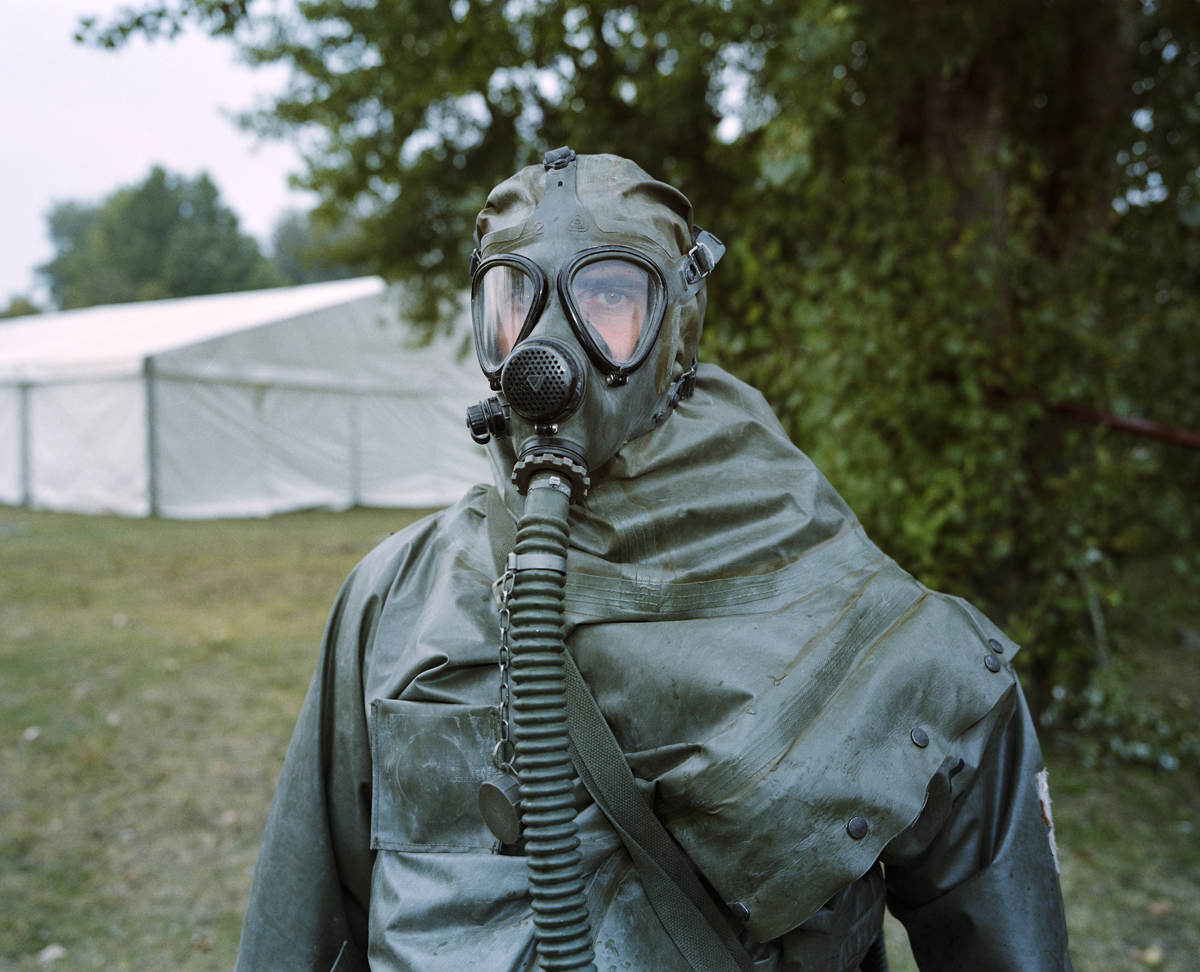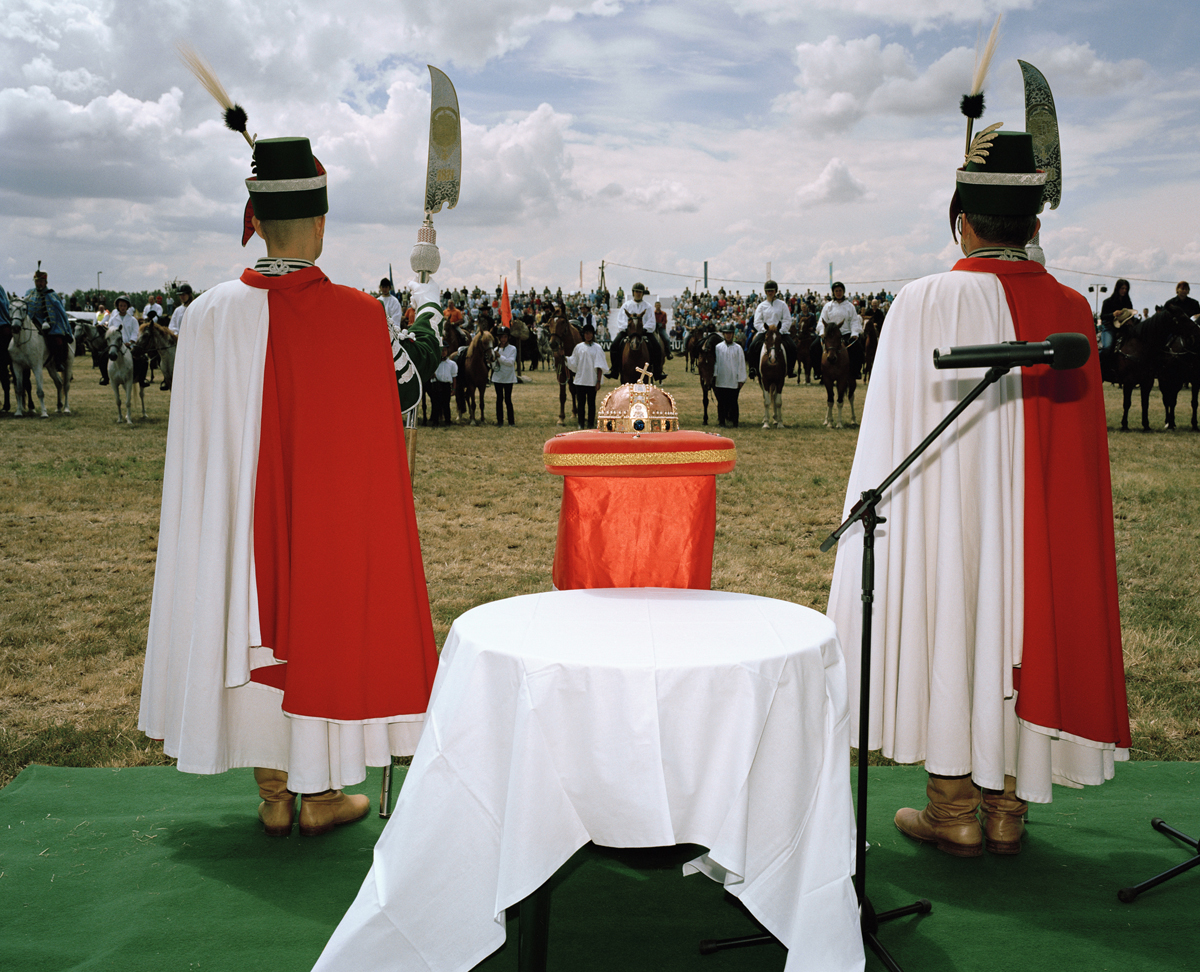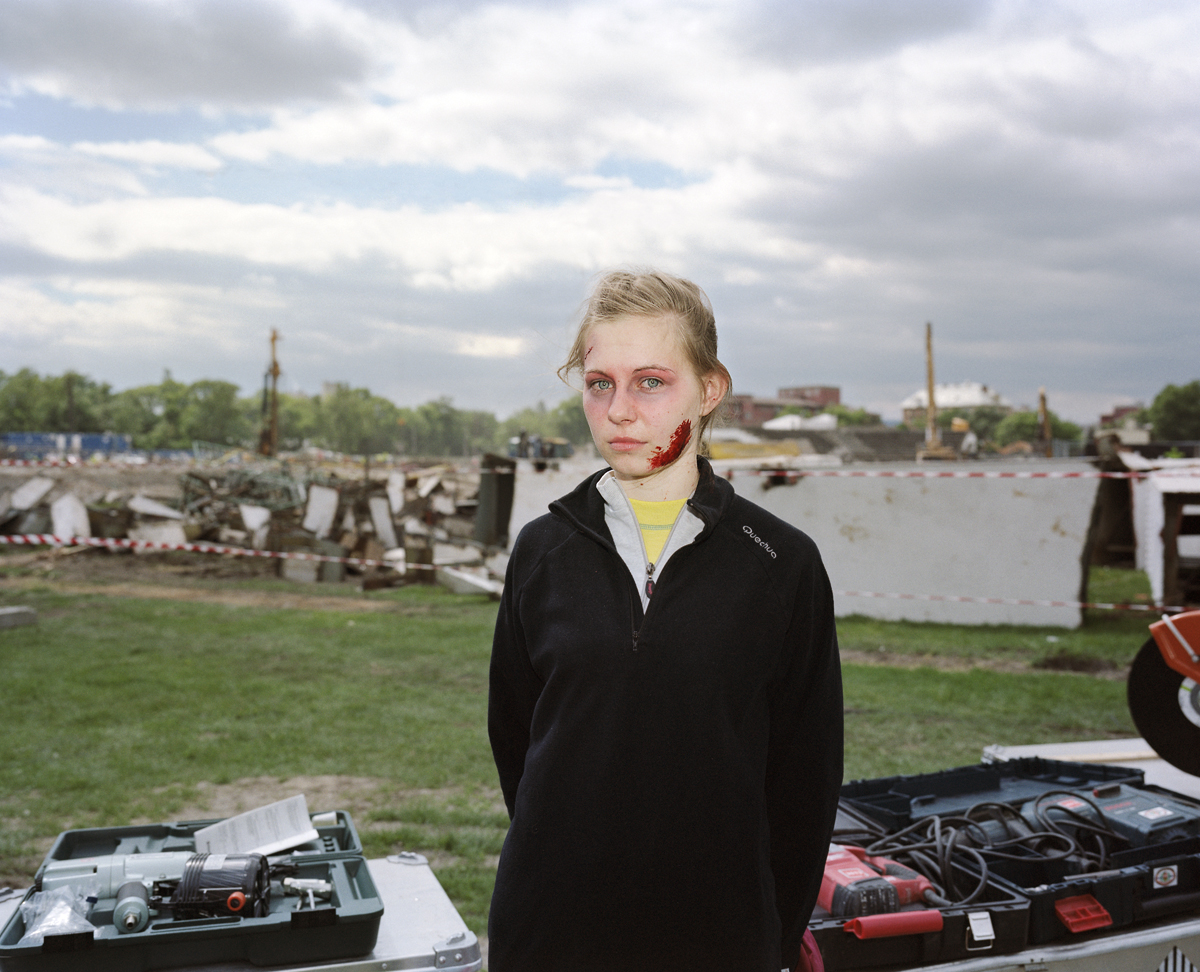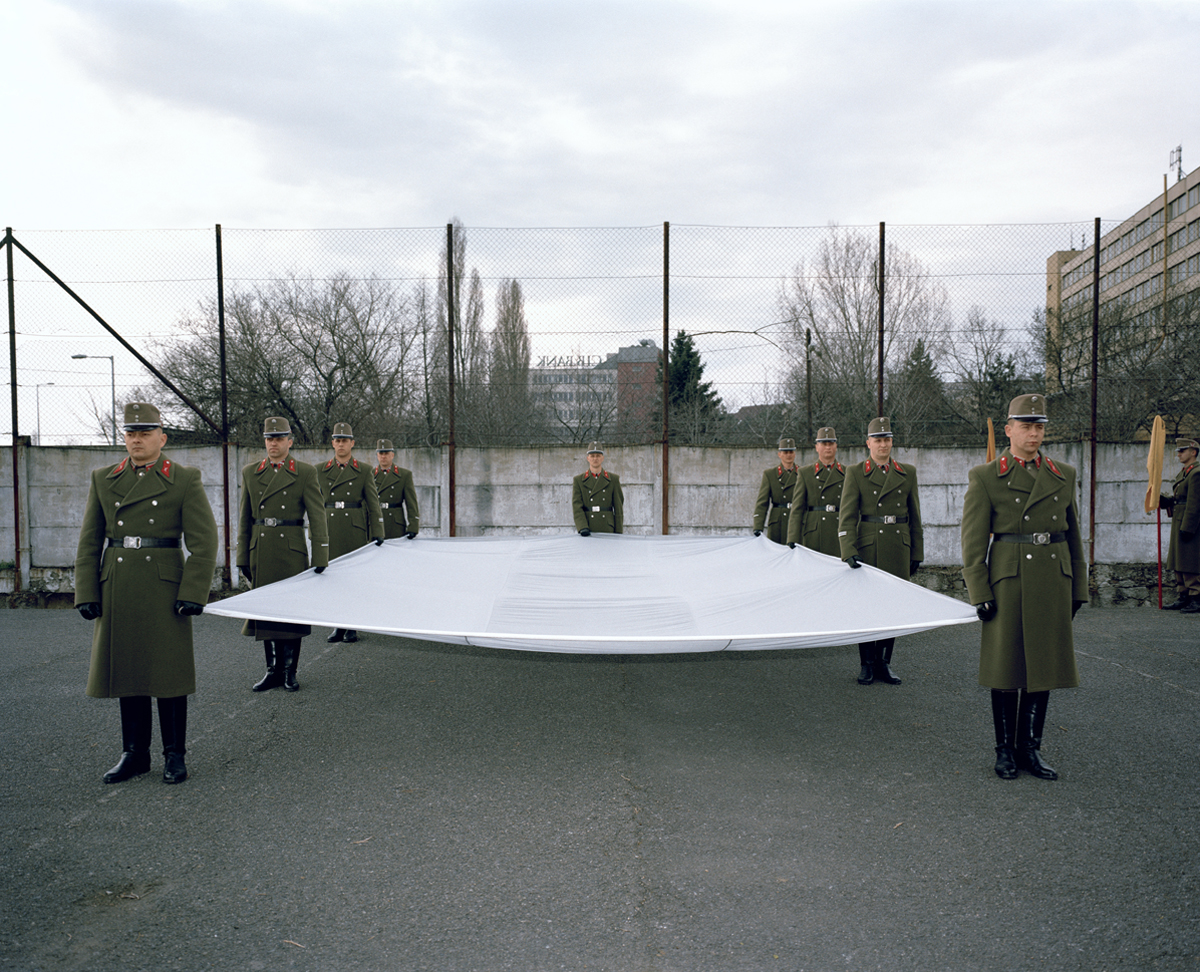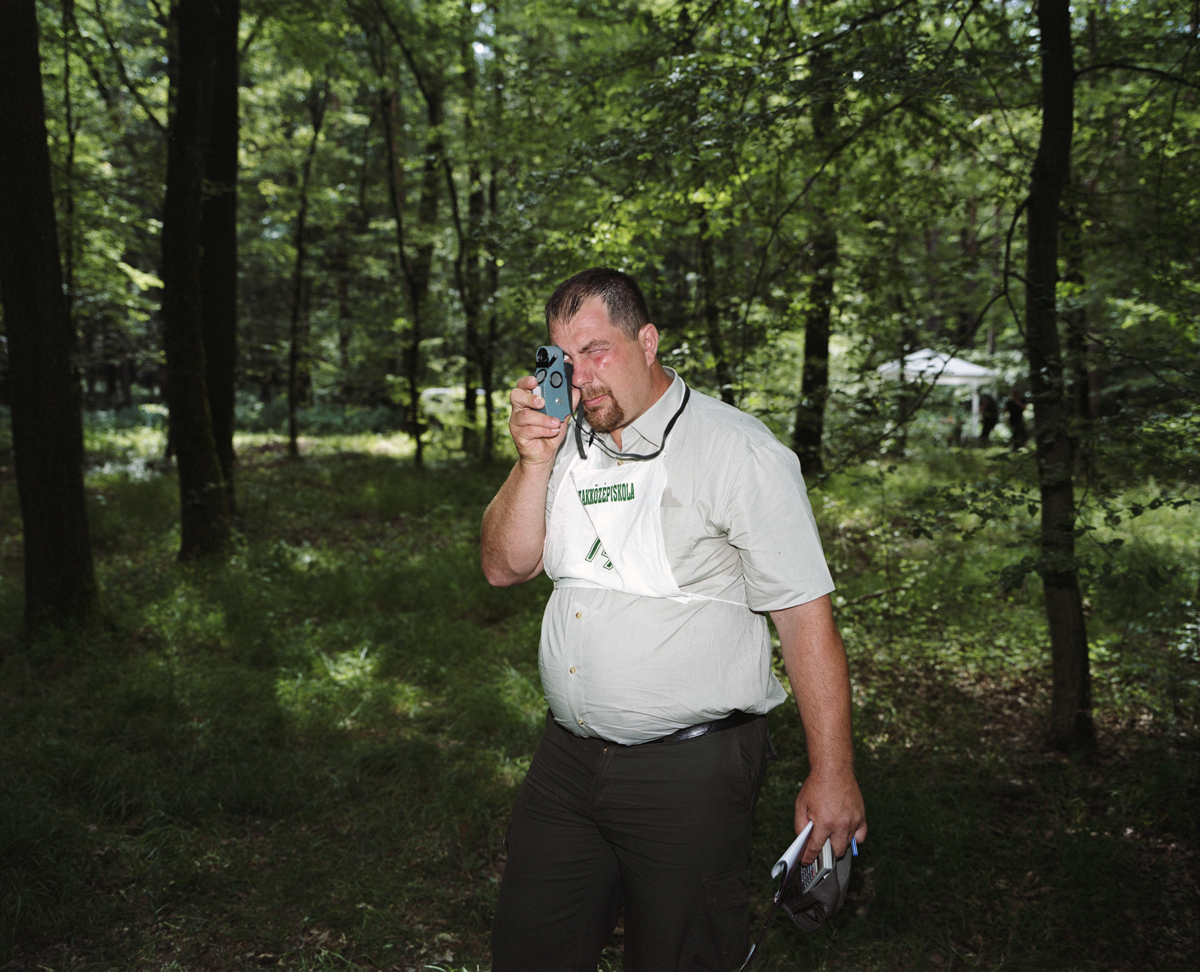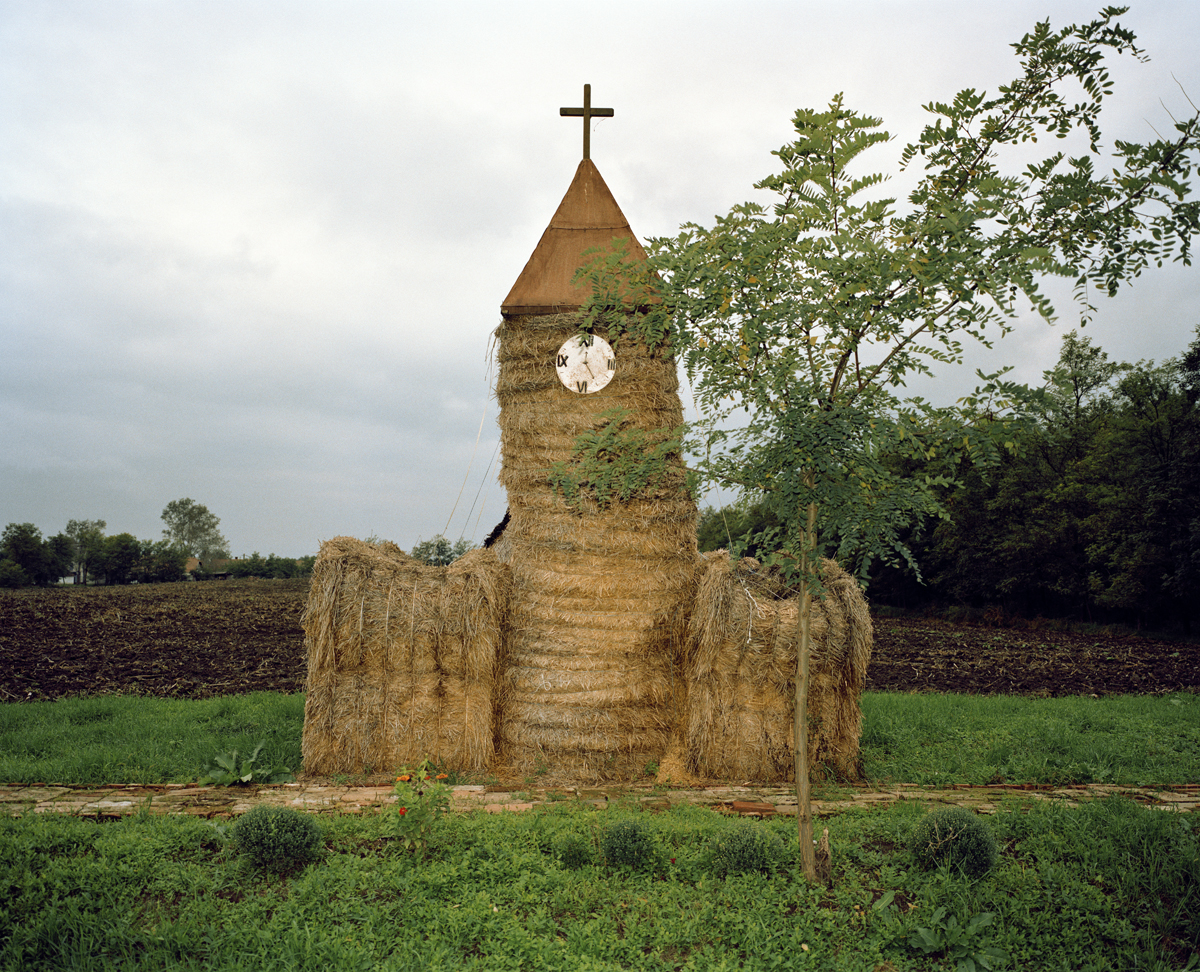Roger Eberhard
Artist Feature
Every week an artist is featured whose single image was published by Der Greif. The Feature shows the image in the original context of the series.
Gábor Arion Kudász
Mar 02, 2016
It’s too easy to say something is within or is beyond human scale, but finding the actual boundaries embracing everything that is human is a rather difficult venture. Jacob Bronowski, opens his magnificent book, The Ascent of Man, with the following statement: Man is a singular creature. He has a set of gifts which make him unique among the animals: so that, unlike them, he is not a figure in the landscape — he is a shaper of the landscape. In body and in mind he is the explorer of nature, the ubiquitous animal, who did not find but has made his home in every continent. Human scale is defined by the horizon drawn around us by the outermost limits of our senses, but most of what we know of the universe reached us via technology. Our greatest responsibility is to constantly search for our place in the world by defining our own scale. On the other hand man is often referred to as a being without scale, by which we point out how great impact we are able to make, but at the same time we unwillingly admit that we are becoming unable to find our origo, our own place. To begin this work I chose my own narrow horizon, that is limited enough for me to inhabit, while flexible enough to examine all what is Human. At the very start an enigmatic object accidentally got in my way, it was the brick, that later on proved to be the perfect metaphor, so many human qualities are compressed into it. The first evidence of the use of this building material was found in what is today a land of war, Syria, in Tell Aswad a ten thousand year-old small town near Damascus. Curiously mathematics also emerged at the dawn of human civilization, in the same time and region. There must be something common shared between them. Just like in mathematics, we make bricks by splitting up the formerly continuous fabric of the material world to form identical units, which we can later use to create constructions never seen before. Bricks are the simplified examples of how the universe can be cut into equal units, and understood. The size of a brick is derived from human measurements, a grip of a palm, length of a foot, height of a man, his muscle power. Of course it had evolved throughout history, its size has grown, its structure and technology became increasingly complex, and still, it is adjusted to our body. The human body was the model for old time measurements and units and many different standards coexisted and fought for their own survival. When the body becomes data, it is detached from itself. It can turn into a mere illustration of the information extracted from living matter using units that once originated from it. All life struggles to find the surroundings in which it can thrive or it attempts to adapt to the given circumstances. Or, it reproduces until it becomes capable of altering the habitat to meet its needs, thus reflect on itself. Rain-forests create their own humid climate, capture rainwater and fertilize the soil. As life in rain-forests creates its own atmosphere, so does technology. Cities convert their surroundings and force living organisms to adapt to the more virulent urban standards. What we call cultural evolution may be only an overlap between biological and technological life. It is clear, Human culture could not exist without harvesting the fruits of technology. I believe as biological evolution nears the limits of its capacities, the shift to technological evolution was not just a possibility, but it was a necessity. We ought not think of our symbiosis with technology as a human achievement, because it was the result of life wanting to cross its borders to expand its horizon of survival beyond the thin surface of Earth. We happen to be at the right time and place to actively participate in it. During my time in the brick factories I cooperated with workers in a sensitization process. Together we examined their role in production and I confronted them with assignments to question the fatigue of creativity, a fundamental human gift. Workers were given chance to picture themselves as small parts of the living organism, and to formulate questions about their function and their relation to it. As doubtful as it may sound, but the fully automatized brick factories — that laid off the majority of their human workforce to improve productivity — showed a remarkable and accurate, yet allegoric example of the above transition from biological to technological. The human-animal distinction proves to be as awkward as the human-machine contrary. As Ray Kurzweil puts it: We are rapidly growing more intimate with our technology. Except, from where I see it, technology is not ours, it belongs to life.
Artist Blog
The blog of Der Greif is written entirely by the artists who have been invited to doing an Artist-Feature. Every week, we have a different author.
Published in:
»Guest-Room Johanna Neurath«
Anna Fabricius – Winterwork
Mar 09, 2016 - Gábor Arion Kudász
href="https://dergreif-online.de/www/wp/wp-content/uploads/2016/03/vlcsnap-2015-02-26-12h55m37s54.png"> Anna Fabricius was my schoolmate at MOME in the early 2000's. It was then when I first began to admire her witty humor and her relaxed image making routine. Since her diploma in 2005 she mostly works with groups of all walks of life, cavalrymen, students, athletes, factory workers or farmers. A playful cross-breeding of leaden political and/or economical topics with symbolic stress relief practices characterize her series and video works.
Winterwork is something we already disconnected from in our commercialized and industrialized urban lives. It used to be a relaxing social activity, a stage to share and maintain cultural traditions, reckoning of the year past, and preparation for the coming season. In the series above Anna cooperated with office staff to revive the collective memory of rural winterwork.
You can find Anna's website here and some of her videos HERE.
Anna Fabricius was my schoolmate at MOME in the early 2000's. It was then when I first began to admire her witty humor and her relaxed image making routine. Since her diploma in 2005 she mostly works with groups of all walks of life, cavalrymen, students, athletes, factory workers or farmers. A playful cross-breeding of leaden political and/or economical topics with symbolic stress relief practices characterize her series and video works.
Winterwork is something we already disconnected from in our commercialized and industrialized urban lives. It used to be a relaxing social activity, a stage to share and maintain cultural traditions, reckoning of the year past, and preparation for the coming season. In the series above Anna cooperated with office staff to revive the collective memory of rural winterwork.
You can find Anna's website here and some of her videos HERE.
Budapest Photography Map
- Gábor Arion Kudász
mg src="https://dergreif-online.de/www/wp/wp-content/uploads/2016/02/Screen-Shot-2016-02-28-at-10.56.51.png" alt="" width="953" height="584" class="aligncenter size-full wp-image-61171" /> Ten years ago we were in Rome on our honeymoon with my wife, we didn't have any ideas where to go and what to see. As we strolled around St Peters square we literally bumped into Marco Bohr, a german photographer whom I met some months earlier in Lausanne during a group show we took part together at Musée de l'Elysée. Marco is a really nice guy, with great interest in japanese photography and he is the man behind Visual Culture Blog. Many photographers when they visit Budapest ask me which galleries they should to see. Marco did the same, but instead of keeping the info for himself, he asked me to compile a map of Budapest's art related venues and shared it on his blog. As a result I regularly get emails suggesting galleries or institutions to add to the Budapest list, and I advise every foreign photographer to look into this map first before they come. Marco built a network of photography enthusiasts living all around the world who contribute their time and knowledge to expand the growing list of Photography Maps of Amsterdam, Antwerp, Athens, Bangkok, Barcelona, Berlin, Brussels, Budapest, Gothenburg, Istanbul, Kraków, Lahore, Lisbon, London, Madrid, Melbourne, Mumbai, New Delhi, New York, Paris, Rome, São Paulo, Tokyo, Vancouver.
If you live in any other city with a noteworthy photography life and you feel the urge to do some charity work, contact Marco and get involved!
Sári Zagyvai – Imaginary Excursion
Mar 08, 2016 - Gábor Arion Kudász
Why don't we just all go on vacation? Well, Sári Zagyvai needed money to pay her rent so she took the job of "keywording" images at a stock photo agency. She lasted nine days, but that nearly 70 hours employment had great effect on her art. One needs some kind of alternative reality or goal to withstand the mind-numbing monotony, so it seems she took her own Imaginary excursions. She says: "Humans had essentially been born to be hunter gatherers but since the consumer era, the physicality of the modern man in the Western world has largely been confined to walking and strolling. My digital montages are acts of reminiscences of our everyday web explorations." It may not be closely related to photography but András Zagyvai, Sári's father invented a brain-melting puzzle, the smartegg. Just in case you get bored of looking at pictures.
Gábor Kerekes – Fly Off
Mar 07, 2016 - Gábor Arion Kudász
Gábor Kerekes passed away two years ago. He was a grand master of contemporary hungarian photography, an example for many. I got to know him personally through my then gallery Vintage, who used to represent both of us. Although Gábor was already a respected artist he would always turn up at the exhibition openings of even the youngest photographers. That was not his kindness, it was his honest commitment and interest towards the art of photography. Gábor Kerekes's ouvre covers a wide spectrum from documentary, experimental positions and even the use of archaic techniques. In his series Fly Off he appropriated and rephotographed aerial photographs to create a rather abstract and sinister set of small horizonless images, captured in an old technique I don't know much about, anthrakotype. As a rule I don't get excited at all about the hand crafted photograph, and I was tremendously relieved when technology offered a controllable environment for artists, like myself, desperately wanting out from dabbling around in darkrooms, but the insignificant-looking little pieces of Gábor spoke to me in an unresistable tone about the loneliness of man in the universe, the distance of ones soul from the crushing functionality of the industrial world. Visit the Gábor Kerekes Archive here, images are shown here with the kind permission of Dorsy Gallery.
József Pécsi Photography Scholarship
Mar 06, 2016 - Gábor Arion Kudász
mg src="https://dergreif-online.de/www/wp/wp-content/uploads/2016/02/002.jpg" alt="Balázs Máté - Parallax, 2014" width="400" height="600" class="aligncenter size-full wp-image-61166" /> It may not make sense why the most prestigious scholarship for young hungarian artists working in the field of photography has almost absolutely no online presence. The scholarship was founded in 1991, right after the democratic change, and since then every year ten photographers, each for a maximum of three years, could produce valuable projects with its support. As I just quickly run through the list of artists who's carrier was secured by this scholarship, among them mine, I have the impression that it had the most significant influence on the future of Hungarian photography in the last 25 years. And yet there is only an obscure page with some downloadable word documents at the exclusively hungarian language website of MANK, the state funded provider of scholarhips across all fields of culture, artist-in-residences, and housing for artists. It is the greatest luxury to let something of this magnitude go unnoticed under the radar of the international (and hungarian) community. This year, another ten young photographers are on the list: Viola Fátyol, Attila Floszmann, Adél Koleszár (whose work I mentioned in an earlier post), Zsuzsanna Marinka, Balázs Máté, Péter Németh, Alíz Veronika Ács, Márton Kállai, Andrea Schmied, László Végh.
Adél Koleszár – New Routes of Faith
Mar 05, 2016 - Gábor Arion Kudász
Adél Koleszár is attracted by the brutal, the disfigured, the outcast, and I'm attracted by the in-to-your-face and all-secrets-told mentality of her addictive pictures. In the last couple years she moved to Mexico to shoot gangs, sects and in general people you don't really want to meet on the street late at night. At the moment Adél and her friend do a project at the northern border region working together with very poor local communities of Mexicali-Baja California, Nogales-Sonora, Ciudad Juáres-Chihuahua. They offer photography workshops for free starting February until April 2016, they want to open a way for people to express frustration and difficulties of living on the border with the US via art: 'At the beginning of this year we traveled together throughout some of the northern states of Mexico and what we realized through the people we met on that trip was that many of the locals in these towns really wanted to tell their stories and share their experiences with outsiders. We feel they could benefit from learning a new way to express themselves and to document the reality of living in such zones. Not only because of being on the frontline of a drug and migration war, but also the affects that the border weighs on the population as a physical and cultural division. There are very few options for artistic studies in these regions, places to exhibit artwork or artistic communities to be part of.' You can get in touch with them here and learn about the project by watching their campaign video here. See the works of Adél Koleszár here and follow her blog here. Cool stuff.
Schwabenzug
Mar 04, 2016 - Gábor Arion Kudász
This year marks the 70th anniversary of Schwabenzug, the forced displacement of Svabians from eastern-european territories to Germany as a result of post WWII collective punishment of german speaking minorities. Since 2013 during a series of workshops MOME photography students took part in a project discovering the remaining traces of this dark heritage. “What is the present? What is real? What is defining?” asked one of the participants of “ The wandering Swab” workshop. These questions arise not without reason, but because they reflect on the fundamental questions of the project, namely: what actually remains of the Swabian reality? What we have, since this phenomenon of middle-european history hardly shows anymore, it has gradually disappeared, functions mostly as a projection on the black surface of the imagination – a non-existence consisting of narrative, reports, pictures, letters and memorabilia. The migration and organized colonization by Swabian and other German speaking groups, which started about three hundred years ago, was directed towards parts of the Hungarian kingdom that was depopulated due to Turkish occupation. This migration, as opposed to earlier ones, moved eastwards along the Danube and in the majority of cases the new settlements came into existence in regions close to the river- hence the German appellation: Danube Swabians. Although at that time they could not have read Hölderlin, their beliefs were consistent with him: Hier aber wollen wir bauen. / Denn Ströme machen urbar / Das Land. (Der Ister) Another kind of Swabian wandering took place at one of the extreme times of the 20th century, but this time towards home: by force, following WWII. many Swabians had to leave, while others remained. Some of the Danube Swabians were expelled, scattered. This is how one half of my kin ended up on the Rhine, the others at Thuringia. For them, this was no coveted "motherland" (west and east zone, later FRG or GDR), not only because new arrivals were often referred to as gypsies... The considerable cultural gap resulted from their agricultural way of life, centuries spent in a self-sustaining isolation. This situation that helped maintain their archaic traditions also resulted in communities that were unable to progress. Furthermore it contributed to their lagging behind the people of the homeland they once left. Later, as mid-century modernization, especially in the form of forced collectivization, became pervasive, lifestyle change and assimilation accelerated. Communication with contemporary German cultures, aside from the political limitations and misunderstanding, was hampered by their 18th Century rural dialect. As a result of the different dialects, much more radical than those that exist in Hungarian, few were alive to the possibility of switching to modern German. A couple of years ago I came across two old ladies who were speaking traditional Swabian; in passing I heard them say, in German: “… After my grandmother died I don't use our dialect, there is no one to talk to who would understand.” What remains of this German cultural inclusion is not much: some old folks with lots of memories, local history museums, nostalgia, many embarrassing style combinations; such postmodern variations can be found in every disintegrating traditional culture in excess quantity. This is why the question remains: What is present? What is real? Josef Tillmann
Szabolcs Barakonyi – Fine, thanks!
Mar 03, 2016 - Gábor Arion Kudász
In recent months Hungary was first page news in the media, thanks to the migration crisis culminating in the closure of southern borders an thanks to the 'un-orthodox' financial politics. Szabolcs Barakonyi reflects on the twisted outside and inside narratives of the political facade from a very personal and critical viewpoint in his series Fine, thanks! 'Public events are typically organized so as to make it possible for a group of people to demonstrate their tradition and rituals to a wider audience. This is equally true for the politician’s ribboncutting ceremonies inaugurating a new building, the ‘authentic prehistoric Hungarians’ shows shooting their arrows backwards from their horses, or the firemen’s demonstration of their skills in a spectacular pageant. The hidden obscene aspect of such events is the contradiction between the organizer’s intentions and the audience’s spontaneous reaction to it. The organizers always want to impose an official narrative on the audience but the latter tends to resist and in this discrepancy between their respective interpretations reality comes to the surface. The audience resists the official story and finally we may learn something completely different about the nature of the event than the organizer wanted us to see.' - Szabolcs Barakonyi


